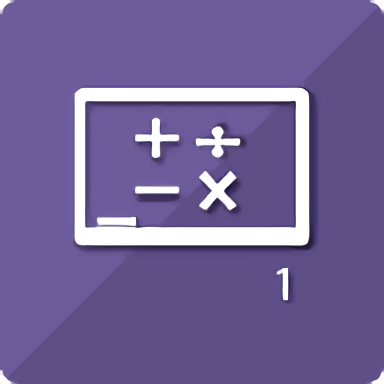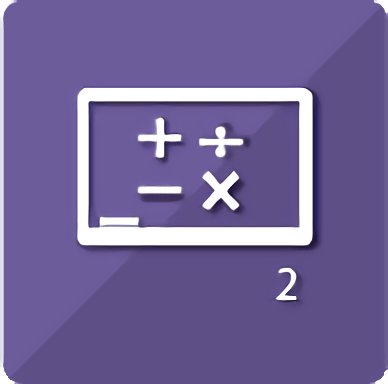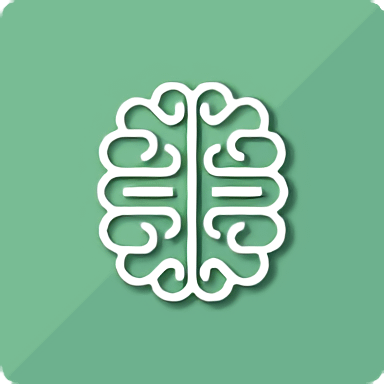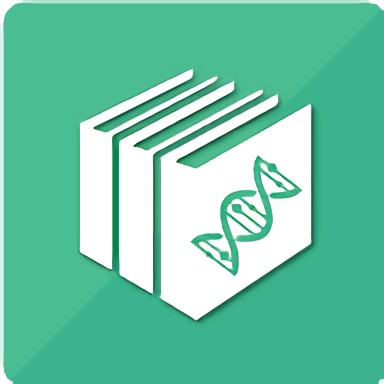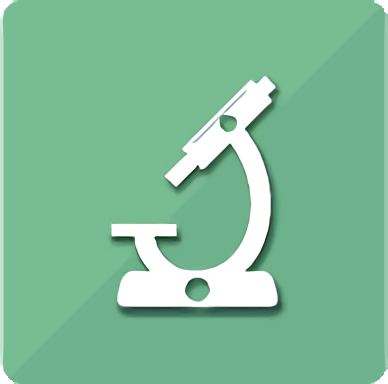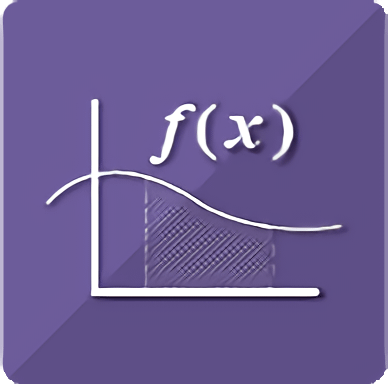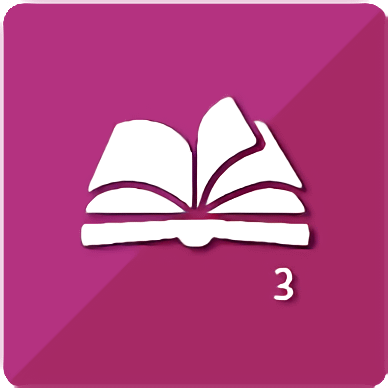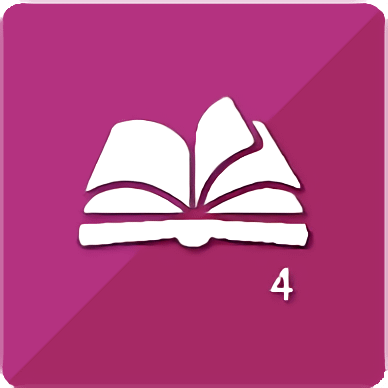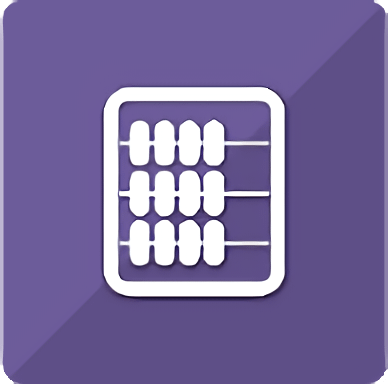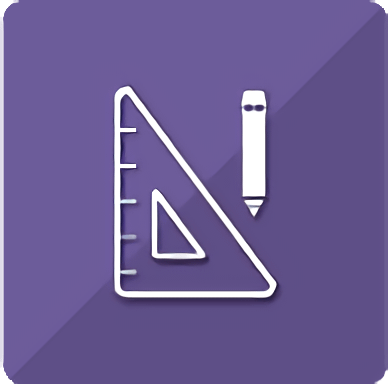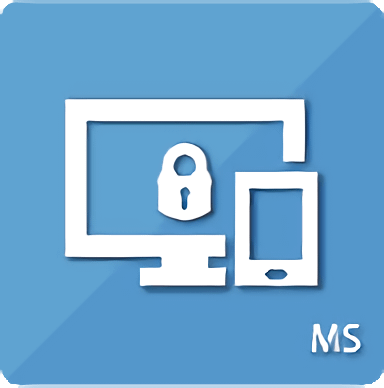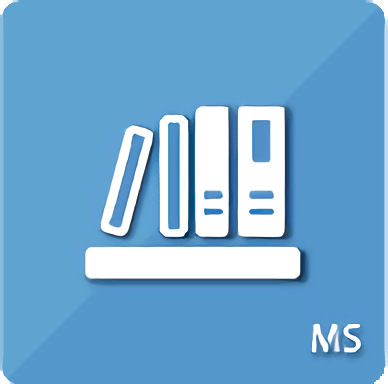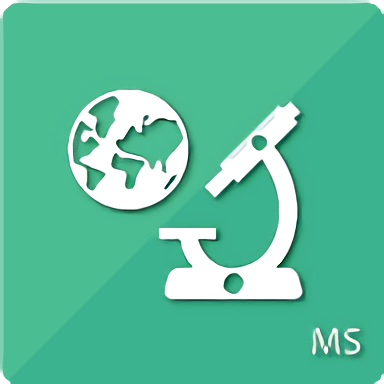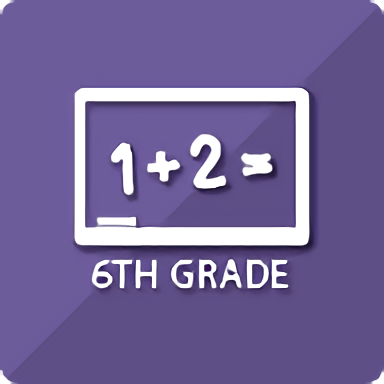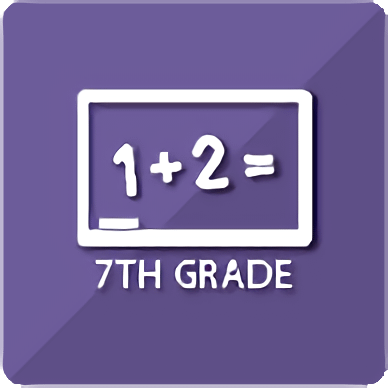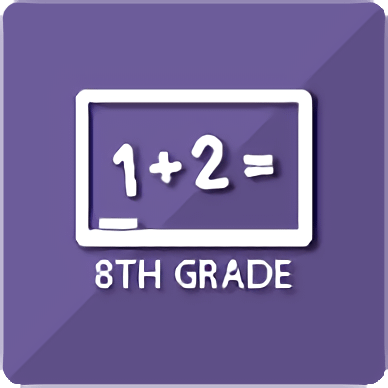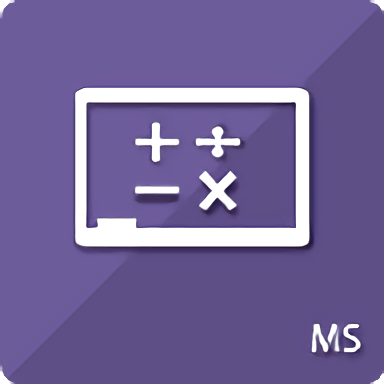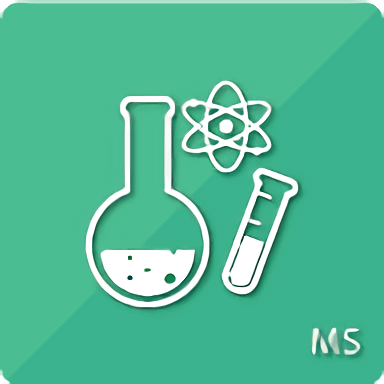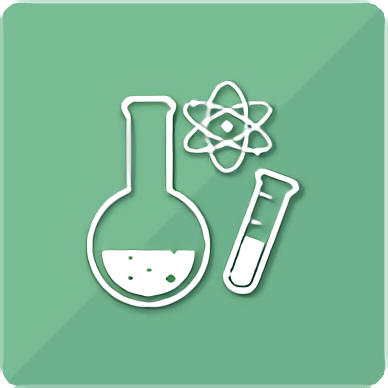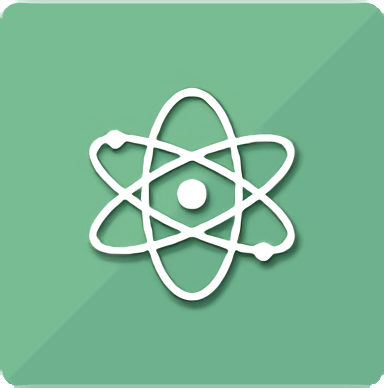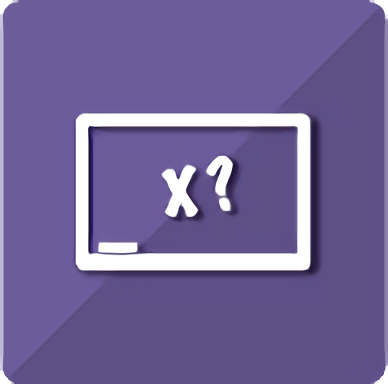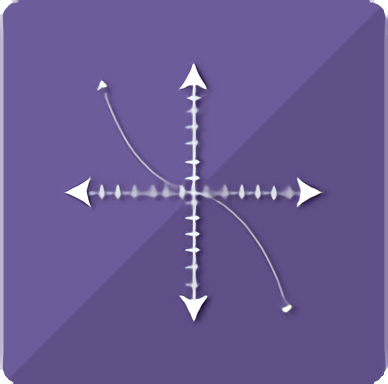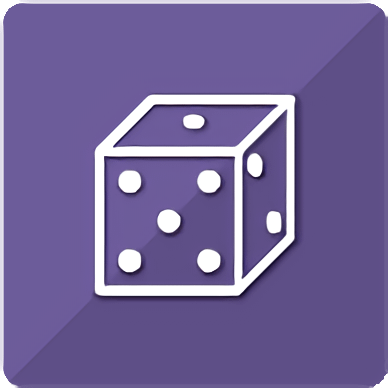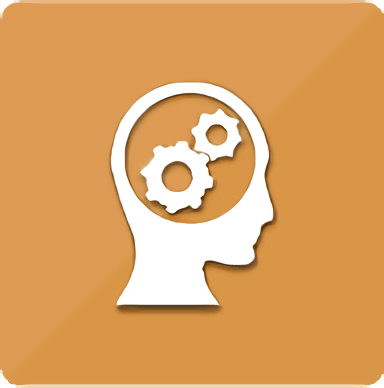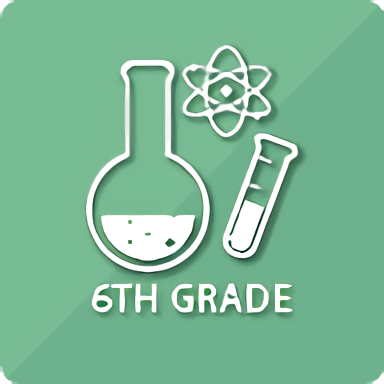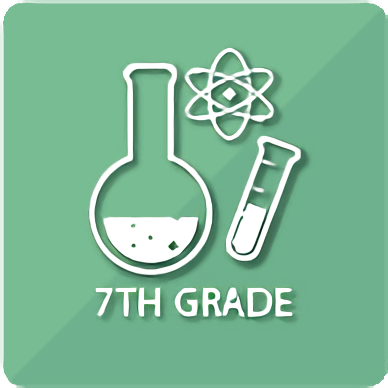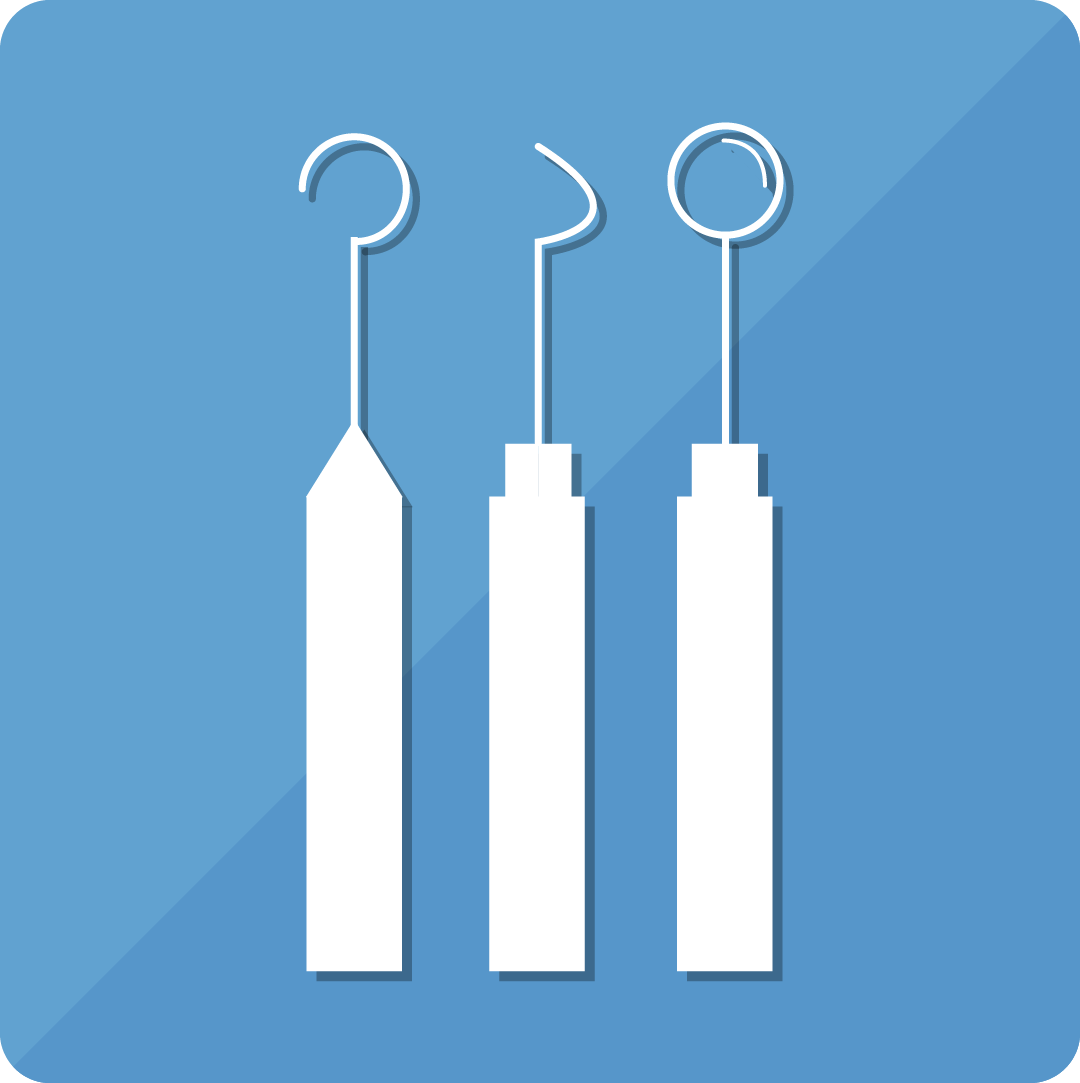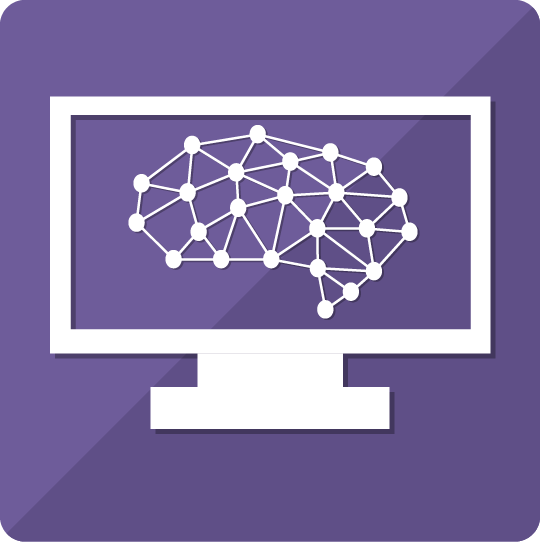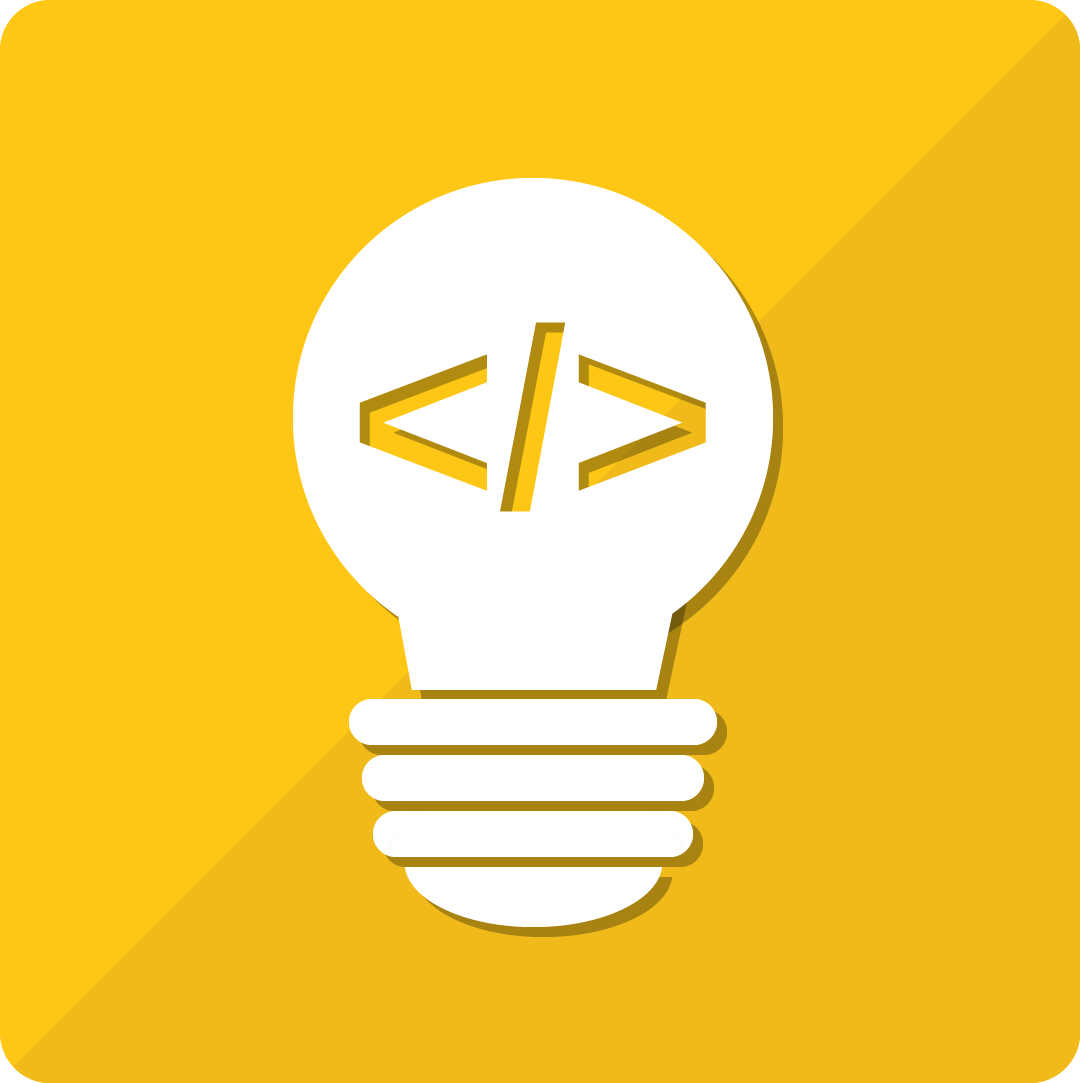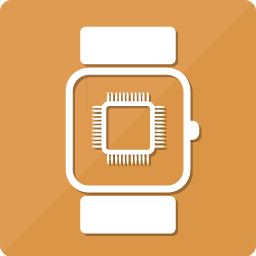All Courses
Algebra 1 [Competency Based] (2nd semester)
$250.00Algebra 1 [Credit Recovery]
$250.00Algebra 1 [Honors] (1st semester)
$250.00Algebra 1 [Honors] (2nd semester)
$250.00Algebra 2 [Competency Based] (1st semester)
$250.00Algebra 2 [Competency Based] (2nd semester)
$250.00Algebra 2 [Credit Recovery]
$250.00Algebra 2 [Honors] (1st semester)
$250.00Algebra 2 [Honors] (2nd semester)
$250.00Algebra 2 [Project Based] (1st semester)
$250.00American History [Competency Based] (1st semester)
$250.00American History [Competency Based] (2nd semester)
$250.00American History [Credit Recovery]
$250.00American History [Honors] (1st semester)
$250.00American History [Honors] (2nd semester)
$250.00Anatomy and Physiology [Competency Based] (1st semester)
$250.00Anatomy and Physiology [Competency Based] (2nd semester)
$250.00Anatomy and Physiology [Credit Recovery]
$250.00Application of Genetics [Competency Based]
$250.00Art History and Appreciation (MS)
$250.00Art History and Appreciation [Competency Based]
$250.00Biology [Competency Based] (1st semester)
$250.00Biology [Competency Based] (2nd semester)
$250.00Biology [Credit Recovery]
$250.00Biology [Honors] (1st semester)
$250.00Calculus [Competency Based] (1st semester)
$250.00Calculus [Competency Based] (2nd semester)
$250.00Calculus [Credit Recovery]
$250.00Chemistry [Competency Based] (1st semester)
$250.00Chemistry [Competency Based] (2nd semester)
$250.00Chemistry [Credit Recovery]
$250.00Chemistry [Honors] (1st semester)
$250.00Chemistry [Honors] (2nd semester)
$250.00Computer Skills for Academic Success [Competency Based]
$250.00Earth Science (MS) (1st semester)
$250.00Earth Science [Competency Based] (1st semester)
$250.00Earth Science [Competency Based] (2nd semester)
$250.00Earth Science [Credit Recovery]
$250.00Economics [Competency Based] (1st semester)
$250.00Economics [Competency Based] (2nd semester)
$250.00English 1 [Competency Based] (1st semester)
$250.00English 1 [Competency Based] (2nd semester)
$250.00English 1 [Credit Recovery]
$250.00English 1 [Honors] (1st semester)
$250.00English 1 [Honors] (2nd semester)
$250.00English 2 [Competency Based] (1st semester)
$250.00English 2 [Competency Based] (2nd semester)
$250.00English 2 [Credit Recovery]
$250.00English 2 [Honors] (2nd semester)
$250.00English 3 [Competency Based] (1st semseter)
$250.00English 3 [Competency Based] (2nd semester)
$250.00English 3 [Credit Recovery]
$250.00English 3 [Honors] (1st semester)
$250.00English 3 [Honors] (2nd semester)
$250.00English 4 [Competency Based] (1st Semester)
$250.00English 4 [Competency Based] (2nd Semester)
$250.00English 4 [Credit Recovery]
$250.00English 4 [Honors] (1st semester)
$250.00English 4 [Honors] (2nd semester)
$250.00Environmental Science [Competency Based]
$250.00French 1 [Competency Based] (1st semester)
$250.00French 1 [Competency Based] (2nd semester)
$250.00French 2 [Competency Based] (1st semester)
$250.00French 2 [Competency Based] (2nd semester)
$250.00General Math [Competency Based] (1st semester)
$250.00General Math [Competency Based] (2nd semester)
$250.00General Math [Credit Recovery]
$250.00Geometry [Competency Based] (1st semester)
$250.00Geometry [Competency Based] (2nd semester)
$250.00Geometry [Credit Recovery]
$250.00Geometry [Honors] (1st semester)
$250.00Geometry [Honors] (2nd semester)
$250.00Health and Fitness (MS)
$250.00Health and Wellness [Competency Based] (1st semester)
$250.00Health and Wellness [Competency Based] (2nd semester)
$250.00Internet Safety (MS) and Study Skills (MS) (2 course bundle)
$250.00Language Arts 6th Grade (1st semester)
$250.00Language Arts 6th Grade (2nd semester)
$250.00Language Arts 6th Grade [Credit Recovery]
$250.00Language Arts 7th Grade (1st semester)
$250.00Language Arts 7th Grade (2nd semester)
$250.00Language Arts 7th Grade [Credit Recovery]
$250.00Language Arts 8th Grade (1st Semester)
$250.00Language Arts 8th Grade (2nd Semester)
$250.00Language Arts 8th Grade [Credit Recovery]
$250.00Life Science (MS) (1st semester)
$250.00Life Science (MS) (2nd semester)
$250.00Life Science [Competency Based]
$250.00Life Skills [Competency Based]
$250.00Macroeconomics [Competency Based]
$250.00Mathematics 6th Grade (1st semester)
$250.00Mathematics 6th Grade (2nd semester)
$250.00Mathematics 6th Grade [Credit Recovery]
$250.00Mathematics 7th Grade (1st semester)
$250.00Mathematics 7th Grade (2nd semester)
$250.00Mathematics 7th Grade [Credit Recovery]
$250.00Mathematics 8th Grade (1st semester)
$250.00Mathematics 8th Grade (2nd semester)
$250.00Mathematics 8th Grade [Credit Recovery]
$250.00Microeconomics [Competency Based] (1st semester)
$250.00Middle School Algebra (1st semester)
$250.00Middle School Algebra (2nd semester)
$250.00Physical Science (MS) (1st semester)
$250.00Physical Science (MS) (2nd semester)
$250.00Physical Science [Competency Based] (1st semester)
$250.00Physical Science [Competency Based] (2nd semester)
$250.00Physical Science [Credit Recovery]
$250.00Physics [Competency Based] (1st semester)
$250.00Physics (Competency Based) (2nd semester)
$250.00Physics [Credit Recovery]
$250.00Pre-Algebra [Competency Based] (1st semester)
$250.00Pre-Algebra [Competency Based] (2nd semester)
$250.00Pre-Algebra [Credit Recovery]
$250.00Pre-Calculus [Competency Based] (1st semester)
$250.00Pre-Calculus [Competency Based] (2nd semester)
$250.00Pre-Calculus [Credit Recovery]
$250.00Probability and Statistics [Competency Based] (2 course bundle)
$250.00Psychology [Competency Based]
$250.00Science 6th Grade (1st semester)
$250.00Science 6th Grade (2nd semester)
$250.00Science 6th Grade [Credit Recovery]
$250.00Science 7th Grade (1st semester)
$250.00Science 7th Grade (2nd semester)
$250.00Science 7th Grade [Credit Recovery]
$250.00Science 8th Grade (1st semester)
$250.00Science 8th Grade (2nd semester)
$250.00Science 8th Grade [Credit Recovery]
$250.00Social Studies 6th Grade (1st semester)
$250.00Social Studies 6th Grade (2nd semester)
$250.00Social Studies 6th Grade [Credit Recovery]
$250.00Social Studies 7th Grade (1st semester)
$250.00Social Studies 7th Grade (2nd semester)
$250.00Social Studies 7th Grade [Credit Recovery]
$250.00Social Studies 8th Grade (1st semester)
$250.00Social Studies 8th Grade (2nd semester)
$250.00Social Studies 8th Grade [Credit Recovery]
$250.00Social Studies 8th Grade [Credit Recovery] (Copy)
$250.00Sociology [Competency Based]
$250.00Spanish 1 [Competency Based] (1st semester)
$250.00Spanish 1 [Competency Based] (2nd semester)
$250.00Spanish 1 [Credit Recovery]
$250.00Spanish 2 [Competency Based] (1st semseter)
$250.00Course Description
Spanish 2 immerses students in the Spanish language and the cultural aspects of Spanish-speaking countries. Students build on what they learned in Spanish 1, with a study of Spanish grammar and an emphasis on increasing their skills in listening, writing, reading, and speaking in Spanish. At the end of this course, in addition to improving their Spanish language skills, students have a knowledge of and appreciation for the cultures of Spanish-speaking countries, including the events and people that have impacted the language.Course Breakdown
- Rooms in a house
- Furniture
- Locations of items
- Household chores
- Responsibilities
- Complaining
- Daily routines
- Hobbies
- Sports
- Modes of transportation
- Planning a trip
- At the airport
- Present perfect tense Body parts
- How you feel
- Healthy living
- Giving advice
- At the beach
- Going to the mountains
- Camping
- Amusement parks
- Art museums
- School-related activities
- Making comparisons of equality
- Comparisons of inequality
- Ser versus estar
Course Goals
- Ask and state the locations of places in relation to other places, and describe what people like to do at different locations.
- Describe school classes and items.
- Review participles and the present perfect tense. Course Goals
- Identify and list fruits, vegetables, proteins, meat, seafood, legumes, carbohydrates, sweets, dairy products, snacks, and drinks.
- Express opinions and tastes about food.
- Ask for clothing and sizes, and remark on how items fit.
Spanish 2 [Competency Based] (2nd semseter)
$250.00Course Description
Spanish 2 immerses students in the Spanish language and the cultural aspects of Spanish-speaking countries. Students build on what they learned in Spanish 1, with a study of Spanish grammar and an emphasis on increasing their skills in listening, writing, reading, and speaking in Spanish. At the end of this course, in addition to improving their Spanish language skills, students have a knowledge of and appreciation for the cultures of Spanish-speaking countries, including the events and people that have impacted the language.Course Breakdown
- Preterite tense indicator words
- Regular -ar, -er, and -ir preterite forms
- Irregular preterite verbs
- Stem-changing verbs in the preterite tense
- Regular -ar, -er, and -ir imperfect forms
- Irregular imperfect verbs: ser, ir, and ver Relationships
- Describing relationships by using adjectives
- Celebrations
- Saber and conocer
- Por and para
- Professions and careers
- Future tense with -ar, -er, and -ir verbs
- Environmental problems, issues, and solutions
- Nosotros commands
Course Goals
- Retell a story about an event that happened in the past.
- Deduce which past tense is more appropriate to use based on the context of the sentence.
- Describe how you were as a child. Prepare for a job interview.
- Examine environmental problems and solutions.
- Investigate and analyze holidays and celebrations observed in Spanish-speaking countries.
Spanish 2 [Credit Recovery]
$250.00Course Description
Spanish 2 immerses students in the Spanish language and the cultural aspects of Spanish-speaking countries. Students build on what they learned in Spanish 1, with a study of Spanish grammar and an emphasis on increasing their skills in listening, writing, reading, and speaking in Spanish. At the end of this course, in addition to improving their Spanish language skills, students have a knowledge of and appreciation for the cultures of Spanish-speaking countries, including the events and people that have impacted the language.Course Breakdown
- The verb estar and locations
- Where people go and why
- Classes, people, and items at school
- Participles and the present perfect tense Food and drink vocabulary
- Expressing preferences
- Restaurant vocabulary
- Food dialogue
- Clothing vocabulary
- Clothing dialogue
Course Goals
- Ask and state the locations of places in relation to other places, and describe what people like to do at different locations.
- Describe school classes and items.
- Review participles and the present perfect tense. Identify and list fruits, vegetables, proteins, meat, seafood, legumes, carbohydrates, sweets, dairy products, snacks, and drinks.
- Express opinions and tastes about food.
- Ask for clothing and sizes, and remark on how items fit.
Technologies in Medicine [Competency Based]
$250.00Course Description
Technology in medicine analyzes the ways medical practice has been able to positively advance as technology increased. Throughout the course, students will examine the engineering behind technology that has led to creating cures for various life threatening diseases. In which case students will be looking at medicine all the way back to the cellular level where they will be able to learn the importance of DNA and RNA as well as how scientists are learning to genetically modify the strands. Furthermore, students will examine epidemiology in its entirety which will allow the students to understand how pandemics and other diseases spread over time as well as allowing students to develop an understanding of how trends work. The course as a whole will give students the tools to be able to map, data analyze, and understand how diseases spread.Course Breakdown
- Biological engineering
- Biotechnology
- Pharmacogenomics
- Eukaryotic and prokaryotic cells
- RNA and DNA
- Antibodies
- Genetic testing
- Human Genome Project
- Stem cells
- Information technology Epidemiology
- Cohort and case-control studies
- Ethics
- Data collection
- Using tables, data, charts, and graphs
- Sampling
- Bias
- Confidence interval
- Evidence-based research
- Public policy
Course Goals
- Develop an understanding of the engineering evolved in medical technology advancements.
- Become familiar with the unifying characteristics of RNA and DNA.
- Examine concepts in medical technology including gene therapy, genetic cloning, and genetic testing.
- Explore the possible uses of stem cells in research.
- Examine how medicine can become personalized. Develop an understanding of epidemiology.
- Become familiar with different ways epidemiology can be studied.
- Examine trends from epidemiology studies.
- Analyze how bias can impact results.
- Examine how evidence-based research can be used to prevent the spread of diseases.
Trigonometry [Competency Based]
$250.00Course Description
Trigonometry explores trigonometric functions and practical applications of trigonometry, such as solving real-life problems through engineering, physics, construction, and design. Students investigate graphs, linear functions, quadratic functions, trigonometric functions, analytical trigonometry, analytical geometry, vectors, and advanced functions. Students develop critical-thinking skills and learn problem-solving techniques to help them succeed in understanding and applying trigonometric principles. By the end of this course, students gain knowledge of and appreciation for trigonometry and problem solving, which will prepare them for future mathematics courses.Course Breakdown
- Degree and radian measure
- The unit circle
- Solving trigonometric functions
- Verifying trigonometric identities
- Reference angles
- Graphs and translations of trigonometric functions
- Inverse trigonometric functions
- Directional bearings
- Harmonic motion Trigonometric identities
- Trigonometric equations
- Sum, difference, and multiple-angle formulas
- Laws of sines and cosines
- Conic sections
- Polar coordinates
- Parametric equations
- Vectors
Course Goals
- Analyze the unit circle and its relation to trigonometric functions.
- Construct graphs of trigonometric functions and identify their key components.
- Explore the effects of operations between functions. Apply trigonometric identities and formulas to solve problems.
- Create equations of conic sections, given a set of requirements.
- Investigate exponential and logarithmic functions.
US Government [Competency Based] (1st semester)
$250.00Course Description
US Government offers students a comprehensive examination of this country’s government. Students explore the evolution of American democracy, from its birth in the eighteenth century to the expansive role of federal, state, and local governments today. The course covers topics such as changes to the Constitution, the function of the Supreme Court, the structure of Congress, and the importance of the media. The course explores the relationship between the political parties and lobbyists, and the process of monitoring and funding federal elections. Students investigate the roles of state and local governments and their impact on citizens’ daily lives. At the end of this course, students have a knowledge of and appreciation for the workings and history of the US government and understand its impact on American society.Course Breakdown
- Roles and powers of the president
- Roles and powers of the Supreme Court
- Federal government and religion
- Congressional committee system
- Interest groups
- Role of political parties
Course Goals
- Describe the structure and function of the executive branch.
- Explain the role that lobbyists and interest groups play in the legislative process.
- Explain the role of political parties in American politics.
- Describe the structure and function of the judicial branch.
US Government [Competency Based] (2nd semester)
$250.00Course Description
US Government offers students a comprehensive examination of this country’s government. Students explore the evolution of American democracy, from its birth in the eighteenth century to the expansive role of federal, state, and local governments today. The course covers topics such as changes to the Constitution, the function of the Supreme Court, the structure of Congress, and the importance of the media. The course explores the relationship between the political parties and lobbyists, and the process of monitoring and funding federal elections. Students investigate the roles of state and local governments and their impact on citizens’ daily lives. At the end of this course, students have a knowledge of and appreciation for the workings and history of the US government and understand its impact on American society.Course Breakdown
- Campaign process
- Types of elections
- Role of the media in government
- The Bill of Rights US court system
- Taxes and national debt
- State governments and their authority
- Local governments and their authority
Course Goals
- Describe the election process.
- Assess the role of the media in American politics.
- Explain how the Bill of Rights protects the important freedoms of individuals. Describe the role of the court system at the local and national levels.
- Contrast common law, statutory law, criminal law, and administrative law.
- Explain the relationship between the American economic system and the federal budget.
- Describe how state and local governments develop their budgets.
US Government [Credit Recovery]
$250.00Course Description
US Government offers students a comprehensive examination of this country’s government. Students explore the evolution of American democracy, from its birth in the eighteenth century to the expansive role of federal, state, and local governments today. The course covers topics such as changes to the Constitution, the function of the Supreme Court, the structure of Congress, and the importance of the media. The course explores the relationship between the political parties and lobbyists, and the process of monitoring and funding federal elections. Students investigate the roles of state and local governments and their impact on citizens’ daily lives. At the end of this course, students have a knowledge of and appreciation for the workings and history of the US government and understand its impact on American society.Course Breakdown
- Roles and powers of the president
- Roles and powers of the Supreme Court
- Federal government and religion
- Congressional committee system
- Interest groups
- Elections
Course Goals
- Describe the structure and function of the executive branch.
- Explain the role that lobbyists and interest groups play in the legislative process.
- Explain the role of political parties in American politics.
- Describe the structure and function of the judicial branch.
- Describe the election process.
World Geography [Competency Based] (1st semester)
$250.00Course Description
World Geography explores the world’s geographical divisions and the differences between Earth and the other planets in the solar system. In addition to Earth’s geographical features, the course explores how the cultural divides between countries impacts international relations. Through the study of geography, students analyze energy usage and explore ways to make the most of the planet without abusing its resources. The study of world geography through historical, cultural, physical, and economic lenses offers students a different perspective and understanding of the world.Course Breakdown
- Time zones
- Maps
- Earth in the solar system
- Climates
- Population
- Religion and language
- North America Central America
- South America
- Europe
- Greece
- Russia
Course Goals
- Analyze geological properties of Earth.
- Examine the interactions of Earth’s systems and cycles.
- Explain the causes and effects of environmental change, including resource use.
- Explore the human and physical geographical features of North America. Explore the human and physical geographical features of Central America and South America.
- Analyze the human and physical geographical features of Europe.
- Examine the human and physical geographical features of Russia.
World Geography [Competency Based] (2nd semester)
$250.00Course Description
World Geography explores the world’s geographical divisions and the differences between Earth and the other planets in the solar system. In addition to Earth’s geographical features, the course explores how the cultural divides between countries impacts international relations. Through the study of geography, students analyze energy usage and explore ways to make the most of the planet without abusing its resources. The study of world geography through historical, cultural, physical, and economic lenses offers students a different perspective and understanding of the world.Course Breakdown
- Central and Southwest Asia
- Eastern Europe
- Africa
- South Africa
- Australia
- Pacific Islands India
- China
- Japan
- Southeast Asia
Course Goals
- Analyze the human and physical geographical features of Central Asia.
- Explore the human and physical geographical features of Africa.
- Examine the human and physical geographical features of Oceania. Investigate the human and physical geographical features of India and South Asia.
- Analyze the human and physical geographical features of China.
- Evaluate the human and physical geographical features of Southeast Asia.
World Geography [Credit Recovery]
$250.00Course Description
World Geography explores the world’s geographical divisions and the differences between Earth and the other planets in the solar system. In addition to Earth’s geographical features, the course explores how the cultural divides between countries impacts international relations. Through the study of geography, students analyze energy usage and explore ways to make the most of the planet without abusing its resources. The study of world geography through historical, cultural, physical, and economic lenses offers students a different perspective and understanding of the world.Course Breakdown
- Uses of geography
- Earth's position in the solar system
- Wind and sunlight
- Precipitation
- Climates
- North America
- Central America
- South America
- Geography of Europe
- Geography of Eastern Europe and the Mediterranean
- Geography of Southwest Asia
- Geography of Central Asia
- Geography of China
Course Goals
- Analyze geological properties of Earth.
- Explore the human and physical geographical features of North America.
- Analyze the human and physical geographical features of Central America and South America. Analyze the human and physical geographical features of Europe.
- Explore the human and physical geographical features of China.
- Examine the human and physical geographical features of Asia.
World History [Competency Based] (1st semester)
$250.00Course Description
World History explores the changes created by the events and people of the past, and explains how these changes impacted modern times. The material is organized sequentially, exploring history from 1400 CE to the present day. Starting with the Renaissance and the Reformation, the course will highlight the cultural, economic, political, and social impact of innovation and intellectual thought. Further changes will be uncovered with the French Revolution, the Industrial Revolution, and the rise of imperialism and nationalism. The closing topics emphasize global conflicts and diplomacy, as seen in World War I, World War II, and the Cold War. Upon completion of the course, students have an appreciation for the patterns of historical change and their impact on modern society.Course Breakdown
- Influence of the Italian Renaissance
- Factors leading up to the Protestant Reformation
- Rise and fall of the Spanish empire
- Importance of the monarchies in England, France, and Russia
- Reasons for the Age of Exploration Central America
- South America
- Europe
- Greece
- Russia
Course Goals
- Investigate the emergence of the Renaissance and examine its impact on the political, economic, and social landscapes of Europe.
- Analyze religious reforms associated with Luther, Calvin, Zwingli, Henry VIII, and John of Leiden and the effects of the Reformation on Europe.
- Evaluate major achievements in literature, music, painting, sculpture, and architecture in sixteenth-century Europe.
- Assess the political atmosphere of post-Reformation Europe and analyze the conflicts that arose during this period. Explore the human and physical geographical features of Central America and South America.
- Analyze the human and physical geographical features of Europe.
- Examine the human and physical geographical features of Russia.
World History [Competency Based] (2nd semester)
$250.00Course Description
World History explores the changes created by the events and people of the past and explains how these changes impacted modern times. The material is organized sequentially, exploring history from 1400 CE to the present day. Starting with the Renaissance and the Reformation, the course will highlight the cultural, economic, political, and social impact of innovation and intellectual thought. Further changes will be uncovered with the French Revolution, the Industrial Revolution, and the rise of imperialism and nationalism. The closing topics emphasize global conflicts and diplomacy, as seen in World War I, World War II, and the Cold War. Upon completion of the course, students have an appreciation for the patterns of historical change and their impact on modern society.Course Breakdown
- Causes of World War I
- Key military events of World War I
- Influence of communism and the Bolshevik Revolution
- Recovery of Europe after World War I
- Popular culture of the 1920s
- The Great Depression
- Hitler and Stalin
- Factors leading up to World War II
- Key military events of World War II
- Conclusion of World War II Recovery after World War II
- Characteristics of the Cold War
- Decline of imperialism in Africa
- The spread of nationalism in India and the Middle East
- Japan's economic success
- Nationalism in Latin America
- Relations between Latin America and the United States
Course Goals
- Analyze how militarism, imperialism, and nationalism caused World War I.
- Explain how the conclusion of World War I set the stage for worldwide depression, the rise of totalitarianism, and the outbreak of World War II.
- Identify how key military events led to technological advancements and the conclusion of World War II. Compare the different ideologies of the United States and the Soviet Union following World War II.
- Explain how postwar global politics led to the rise of nationalist movements in Africa and Southeast Asia.
- Identify and explain the historical relationship between the United States and Latin American countries.
World History [Credit Recovery]
$250.00Course Description
World History explores the changes created by the events and people of the past, and explains how these changes impacted modern times. The material is organized sequentially, exploring history from 1400 CE to the present day. Starting with the Renaissance and the Reformation, the course will highlight the cultural, economic, political, and social impact of innovation and intellectual thought. Further changes will be uncovered with the French Revolution, the Industrial Revolution, and the rise of imperialism and nationalism. The closing topics emphasize global conflicts and diplomacy, as seen in World War I, World War II, and the Cold War. Upon completion of the course, students have an appreciation for the patterns of historical change and their impact on modern society.Course Breakdown
- Rise of the European monarchs
- Advantages and disadvantages of colonial expansion
- Factors leading to the French Revolution
- Movement toward economic, political, and social modernization
- Intellectual developments of the Enlightenment Political and social reforms of the nineteenth century
- Role of manifest destiny in the United States
- Characteristics of nationalism in Europe
- Factors leading up to World War I and World War II
- Key military events of World War II
- Conclusion of World War II
Course Goals
- Explain the factors that led to the Protestant Reformation and how it affected the government and society.
- Analyze the causes and effects of the French Revolution and how the revolution led to the Napoleonic era.
- Identify the major events and ideas that gave rise to the changes in scientific thought, philosophies, and the Enlightenment. Compare and contrast the political and social reforms of the nineteenth century and the role they had in nationalism.
- Analyze the major events of militarism that caused political and national strife, igniting both world wars.
- Explain the influence of new ideologies, such as communism, on Europe following World War I, and examine the causes of the Bolshevik Revolution.
Adobe Illustrator Certification Course
$330.00Course Description
This course introduces students to Adobe Illustrator and prepares students to take the ACA Certification Exam on Illustrator. Students will get an insight into what it is like working in the graphic design industry. Students will learn everything from absolute basics like navigating Illustrator to performing complex tasks like managing colors, drawing, creating illustrations, and much more. The course contains guided video tutorials, hands-on projects, and step-by-step resources that help students learn how to work in Illustrator.Course Breakdown
- Working in the Design Industry
- Understanding Digital Graphics and Illustrations
- Understanding Adobe Illustrator Part I
- Understanding Adobe Illustrator Part II
- Creating Digital Graphics and Illustrations Using Adobe Illustrator Part I
- Creating Digital Graphics and Illustrations Using Adobe Illustrator Part II
- Archive, Export, and Publish Graphics Using Adobe Illustrator
Course Goals
This course prepares students for the Adobe Certified Associate certification exam. To learn more please click here.Adobe InDesign Certification Course
$250.00Course Description
This course introduces students to the world of Adobe Photoshop. Students will get an insight into what it is like working in the visual and graphic design industry. Over 11 modules, students will learn everything from absolute basics like navigating Photoshop to performing complex tasks like editing and retouching photos, applying filters and effects, and even creating original artwork. The course contains guided tutorials, do-it-yourself projects, and great resources that will help students practice and learn how to work in Photoshop.Course Breakdown
- Working in the Design Industry Part I
- Working in the Design Industry Part II
- Project Setup and Interface Part I
- Project Setup and Interface Part II
- Project Setup and Interface Part III
- Organizing Documents Part I
- Organizing Documents Part II
- Creating and Modifying Visual Elements Part I
- Creating and Modifying Visual Elements Part II
- Creating and Modifying Visual Elements Part III
- Publishing Digital Media
Course Goals
This course prepares students for the Adobe Certified Associate certification exam.Adobe Photoshop Certification Course
$250.00Course Description
This course prepares students to demonstrate expertise in Adobe’s Photoshop software and take the ACA Certification Exam on Photoshop. Students will learn through engaging and interactive content, projects, and practice exam items aligned to the learning objectives outlined by Adobe’s exam specifications. Students will leave this course with career-ready, real‐time skills in one of the most popular software programs in the world!Aeronautics and Space Travel
$330.00Course Description
This course introduces students to the history and near future of space travel. Students will explore the possibilities of moon bases, Mars colonies, and visiting the outer planets in our solar system and their moons. Students will also discuss important ethical and legal issues around space exploration, such as asteroid mining and war in space. The course gives an expansive view of the technologies, science, and theories that will make far-fetched dreams into realities during the student's lifetime.Course Breakdown
- Introduction to Space Travel
- Apollo and Shuttles
- International Space Station and Satellites
- Moon Base
- Mars Colony
- Asteroid Mining
- Solar System Exploration
- Robots and War in Space
- Spacecraft Technology
- Interstellar Travel
Algebra 1 [Project Based] (1st semester)
$250.00Course Description
What are algebraic expressions? How are they structured, and how can they be combined to create equations and inequalities? How do you know that the solutions you find are correct? In Algebra 1, students create expressions from verbal descriptions, manipulate and transform them, and create visual models. Requiring students to explain each step helps them understand mathematical processes. Exploring functions, sequences, and their corresponding graphs helps students determine the best ways to represent each. Students examine functions graphically, numerically, symbolically, and verbally, and learn how to translate between these different forms. Students’ depth of understanding increases as they complete proofs and describe data, fitting functions to their data. Students then extend their knowledge of linear and exponential relationships and apply their new understanding to create quadratic and exponential expressions as models of real-life phenomena.Algebra 1 [Project Based] (2nd semester)
$250.00Course Description
What are algebraic expressions? How are they structured, and how can they be combined to create equations and inequalities? How do you know that the solutions you find are correct? In Algebra 1, students create expressions from verbal descriptions, manipulate and transform them, and create visual models. Requiring students to explain each step helps them understand mathematical processes. Exploring functions, sequences, and their corresponding graphs helps students determine the best ways to represent each. Students examine functions graphically, numerically, symbolically, and verbally, and learn how to translate between these different forms. Students’ depth of understanding increases as they complete proofs and describe data, fitting functions to their data. Students then extend their knowledge of linear and exponential relationships and apply their new understanding to create quadratic and exponential expressions as models of real-life phenomena.Course Breakdown
- Systems of equations and inequalities
- Scientific notation
- Properties of exponents
- Operations with polynomials
- Factoring
- Characteristics of quadratic functions Modeling with quadratic functions
- Data displays
- Measures of central tendency
- Experimental and theoretical probability
- Geometric sequences
- Simple exponential functions
- Radical equations
Course Goals
- Demonstrate the ability to solve systems of equations using a variety of methods.
- Simplify polynomials using multiple operations.
- Use knowledge of polynomials and scientific notation to interpret and analyze waste.
- Apply the different methods of factoring polynomials. Apply different methods of solving quadratic equations based on a given context.
- Define and use each of the measures of central tendency.
- Compute various types of probabilities.
- Utilize knowledge of measures of central tendency to analyze epidemics.
- Solve problems involving radicals by using multiple operations.
Algebra 2 [Project Based] (2nd semester)
$250.00Augmented and Virtual Reality Applications
$250.00Course Description
Separating hype from reality is hard… especially in the fast-growing and evolving space of augmented and virtual reality (AR/VR). Recent advances in technology has allowed AR/VR systems to become extremely sophisticated and realistic. This course introduces students to the technologies that underpin AR/VR systems. Then the course walks through 5 applications of AR/VR and how they will change and impact numerous aspects of our lives and the economy. Students will also learn about and discuss the risks and side effects of these systems, including health, privacy, and ethical implications.Course Breakdown
- Introduction to Augmented and Virtual Reality
- Augmented Reality Systems
- Virtual Reality Systems
- AR and VR in Gaming
- AR and VR in Education
- AR and VR in Entertainment
- AR and VR in Healthcare
- AR and VR in Architecture, Engineering, and Construction
- AR and VR in Shopping
- Social VR and Telepresence
Biology [Project Based] (1st semester)
$250.00Course Description
The science of biology is large, complex, and constantly changing. This course provides students with a broad and interactive experience covering the main topics of biological science. Topics range from cell reproduction to the diversity of life. Students also learn about the chemical components of life, the process of energy conversion, and life’s functions. The course explores genetics, incorporating the latest scientific research, including the use of genetics in biotechnology. Next, the course covers ecology to raise students’ awareness of the many challenges and opportunities in the modern world and how they apply to the field of biology. Finally, the course presents the theory of evolution and the evidence that supports the theory. Throughout the course, students complete lab activities that reinforce the material and provide the opportunity to apply their knowledge through interactive experiments and activities.Course Breakdown
- Scientific method project
- The scientific method
- Characteristics of life
- Classification of living things
- Basic chemistry
- Biochemistry
- Cell structure
- Cellular organelles
- Types of cells
- Cellular transport Biomimcry Project
- Energy and ATP
- Cellular respiration
- Photosynthesis
- The cell cycle
- Mitosis
- Meiosis
- Genetics
Course Goals
- Develop proper scientific methodology techniques and apply them in scientific investigations, culminating in a scientific inquiry.
- Become familiar with the unifying characteristics shared by all living organisms.
- Examine concepts in chemistry that are important to living organisms, including the structures and functions of major biomolecules.
- Explore the structures and functions of various cellular organelles.
- Explain how cells maintain homeostasis through passive transport. Describe the way cells process energy for their activities.
- Explain the processes of photosynthesis and cellular respiration.
- Investigate the properties of plants and nature that could be applied to current issues humans face.
- Compare and contrast the ways cells reproduce through mitosis and meiosis.
- Apply the principles of genetics to demonstrate how traits pass from parents to offspring.
Biology [Project Based] (2nd semester)
$250.00Course Description
The science of biology is large, complex, and constantly changing. This course provides students with a broad and interactive experience covering the main topics of biological science. Topics range from cell reproduction to the diversity of life. Students also learn about the chemical components of life, the process of energy conversion, and life’s functions. The course explores genetics, incorporating the latest scientific research, including the use of genetics in biotechnology. Next, the course covers ecology to raise students’ awareness of the many challenges and opportunities in the modern world and how they apply to the field of biology. Finally, the course presents the theory of evolution and the evidence that supports the theory. Throughout the course, students complete lab activities that reinforce the material and provide the opportunity to apply their knowledge through interactive experiments and activities.Course Breakdown
- Structure of DNA
- DNA replication
- Protein synthesis
- Mutations
- Bacteria
- GMO project
- Viruses
- Protists
- Fungi
- Plants Types of animals
- Causes of disease
- Living with disease
- Major organ systems of the body
- Evolution
- Ecology
Course Goals
- Examine the structure of DNA and outline the process of DNA replication.
- Describe how proteins are made through transcription and translation.
- Explore the various applications of genetic engineering techniques.
- Construct an argument about the use of genetically modified organisms.
- Distinguish between the characteristics of bacteria, archaea, protists, fungi, and plants. Distinguish the major groups of animals from one another according to their characteristics.
- Describe the structure and function of each major body system.
- Investigate how a disease may affect the human body via a body map.
- Explore the major themes of ecology and examine how humans impact the environment.
- Describe the mechanisms of evolution and investigate the evidence supporting the Theory of Evolution.
Career Exploration in Dentistry
$250.00Course Description
This course introduces students to the exciting and varied career opportunities in the dentistry profession, from dental assistant all the way up to oral surgeon. Students will review the history of dentistry globally and in the U.S., and will learn key dental terminology. The course will introduce the roles and tasks done as well as the skills and education required of nearly every member of the dental staff. Students will gain an understanding of what it takes to perform each position, and how they work together.Career Exploration in Finance
$250.00Course Description
This course introduces students to the challenging and lucrative world of finance. While “Wall Street” may still get a bad rap after the 2008 financial crisis, finance careers remain highly sought after and can be highly rewarding. The course reviews key financial terms and examines various groups, positions, and roles within financial institutions. Students will learn about resumes, interviews, and networking. Students will also discuss ethics on Wall Street and the role of finance within society.Course Breakdown
EdisonLearning eCourses® are structured in a consistent, research-based format utilizing multiple pedagogical concepts such as Understanding by Design, Growth Mindset, and Video and Project-based learning. Through the use of these pedagogical concepts, our career preparatory elective courses maintain a consistent and engaging course structure that supports student-centered learning.Course Goals
- Why Pursue a Career in Finance?
- Finance Basics
- Investment Banking
- Sales and Trading
- Private Wealth Management
- Financial Planning and Analysis
- High School, College and Internship Preparation
- Networking, Resumes, Cover Letters and Interviews
- Succeeding on the Job
- Life after Banking
Career Exploration in Healthcare
$250.00Course Description
This course introduces students to the exciting and varied career opportunities in the health care industry that will be in demand in their future! The course will introduce the roles and tasks, identify education and skills needed, identify responsibilities of roles that support or supervise their role, analyze legal and ethical responsibilities, limitations, and implications for each of these professions.Course Breakdown
EdisonLearning eCourses® are structured in a consistent, research-based format utilizing multiple pedagogical concepts such as Understanding by Design, Growth Mindset, and Video and Project-based learning. Through the use of these pedagogical concepts, our career preparatory elective courses maintain a consistent and engaging course structure that supports student-centered learning.Course Goals
- Timeline of Healthcare Careers
- The Physician and the Physician’s Assistant
- The Pharmacist
- The Physical Therapist
- The Healthcare Information Technology Manager
- The Occupational Therapist
- The Technician
- The Dentist
- The Paramedic
- The Nurse
Cloud Technologies and the Internet of Things
$250.00Course Description
First, we had the Internet of computers. Then with the advent of email and social media, along with mobile technology, it became the Internet of people. Today’s world is increasingly becoming the Internet of things. With advances in battery power, sensors, and computer chips, more and more devices are being connected to the Internet. This will allow them to be monitored, controlled, and used more effectively for people and businesses. This course will examine the trends and opportunities surrounding the Internet of Things. Students will learn about the technologies, hardware, and software that underpin the Internet of Things. The course will examine a variety of end-market applications in our homes, businesses and cities. Finally, students will learn about the many career opportunities that the Internet of Things will enable.Course Breakdown
- Introduction to Artificial Intelligence
- Perception and Intelligence
- Algorithms in AI
- Machine Learning
- Deep Learning & Neural Networks
- Humans and AI
- Ethical AI and Biases
- AI and Jobs
Course Goals
EdisonLearning eCourses® are structured in a consistent, research-based format utilizing multiple pedagogical concepts such as Understanding by Design, Growth Mindset, and Video and Project-based learning. Through the use of these pedagogical concepts, our career preparatory elective courses maintain a consistent and engaging course structure that supports student-centered learning.Construction: Fundamentals and Careers
$250.00Course Description
This course introduces students to the evolving industry of construction! In addition to building on standard concepts such as technical skills, project planning, and regulations, students will learn about the variety of career possibilities within construction. They will also explore the entrepreneurial side of construction and discover what it takes to start and run your own business in this field. Finally, the course will look towards the future and analyze trends in green materials, energy efficiency, and technology to determine how these will impact the homes we build and live in.Course Breakdown
- Introduction to Home Construction
- Academic Foundations for Careers in Construction
- Technical Skills in Home Construction
- Project Planning in Home Construction
- Safety and Health in Home Construction
- Contracts and Regulations in Home Construction
- Careers in Home Construction
- Owning a Construction Business
- Green Construction
- The Future of Home Construction
Course Goals
EdisonLearning eCourses® are structured in a consistent, research-based format utilizing multiple pedagogical concepts such as Understanding by Design, Growth Mindset, and Video and Project-based learning. Through the use of these pedagogical concepts, our career preparatory elective courses maintain a consistent and engaging course structure that supports student-centered learning.Drones: Remote Pilot Certification Course
$250.00Course Description
This course prepares students to take the Federal Aviation Administration’s Part 107 exam, which is essential to becoming a commercial drone pilot. The field of unmanned aerial vehicles is growing rapidly, as the opportunities to use them for search and rescue, photography, recreation, inspection, and many others continue to multiply. Students will learn the critical facts to prepare for the test’s topics, which include: regulations, airspace and requirements, weather, loading & performance, and operations. The course will conclude with a look at the most promising careers in the field of drones.Course Breakdown
- Introduction to the Drone Remote Pilot Exam
- Regulations Part 1
- Regulations Part 2
- Airspace & Requirements
- Weather
- Loading & Performance
- Operations
- Drone Careers
Course Goals
EdisonLearning eCourses® are structured in a consistent, research-based format utilizing multiple pedagogical concepts such as Understanding by Design, Growth Mindset, and Video and Project-based learning. Through the use of these pedagogical concepts, our career preparatory elective courses maintain a consistent and engaging course structure that supports student-centered learning.Earth Science [Project Based] (1st semester)
$250.00Course Description
Earth Science explores how a number of sciences, including geology, physics, chemistry, and biology impact the world and universe around us. In this interactive and engaging course, students study air, water, and the physical processes that shape the physical world, and how human civilization has affected the balance of nature. Students learn about the modern science behind topics from the Earth’s history, such as continental drift, ice ages, fossil dating, and geological timescale. Students will also look at processes that affect life today, such as weathering and erosion, the rock cycle, weather patterns, and climate. They will explore regular phenomena, the cause of the seasons and natural disasters. The students will examine the formation, acquisition and use of natural resources, as well as alternative energy sources. The students will also look at Earth as a small part of a larger universe in an exploration of astronomy. They will examine the Solar System and the stars and galaxies beyond it.Course Breakdown
- Scientific principles
- Cycles of matter
- Studying and modeling the Earth
- Earth's movements and the seasons
- Factors that determine climate
- Climate-change analysis project
- Formation and age of rocks
- Geological time
- Formation of minerals
- Formation of natural resources Using natural resources
- Effect of the location of resources
- Features and motions of the Moon
- Continental drift
- Causes and effects of earthquakes
- Formation and catastrophic results of volcanoes
- Movement and effects of glaciers
- Earth formations project
Course Goals
- Develop proper scientific methodology techniques and apply them in scientific investigations.
- Analyze the impact of the water, carbon, and energy cycles on Earth and explain how humans interact with each.
- Describe how models are used to make observations and predictions in Earth Science.
- Explain the processes of the rock cycle and the methods used to find the relative and absolute ages of rocks.
- Describe the formation of natural resources and how they are obtained for use as energy sources. Describe the motion of Earth and explain how it affects the climate.
- Explain how the climate changes over time in different regions.
- Explain the theory of plate tectonics and continental drift.
- Compare the characteristics of different types of volcanoes.
- Summarize how the ice ages influenced the formation of geologic structures.
Earth Science [Project Based] (2nd semester)
$250.00Course Description
Earth Science explores how a number of sciences, including geology, physics, chemistry, and biology impact the world and universe around us. In this interactive and engaging course, students study air, water, and the physical processes that shape the physical world, and how human civilization has affected the balance of nature. Students learn about the modern science behind topics from the Earth’s history, such as continental drift, ice ages, fossil dating, and geological timescale. Students will also look at processes that affect life today, such as weathering and erosion, the rock cycle, weather patterns, and climate. They will explore regular phenomena, the cause of the seasons and natural disasters. The students will examine the formation, acquisition and use of natural resources, as well as alternative energy sources. The students will also look at Earth as a small part of a larger universe in an exploration of astronomy. They will examine the Solar System and the stars and galaxies beyond it.Course Breakdown
- Soil formation
- Weathering and erosion
- River systems
- Atmosphere and its cycles
- The Sun and its effect on the atmosphere
- Human impact on the atmosphere
- Formation of wind patterns
- Formation of weather
- Thunderstorms, tornadoes, and hurricanes
- Predicting weather patterns
- Climate forecast project Basics of oceanography
- Landforms and food webs of the ocean
- Marine ecosystems project
- Structure of the solar system
- Bodies in the solar system
- Electromagnetic radiation
- Stars and galaxies
- Human impacts and programs
- Energy sources
- Impacts on ecosystems
Course Goals
- Summarize the effects of weathering and erosion on the three different rock types.
- Describe river systems and how they affect Earth's surface.
- Compare atmospheric cycles and the ways humans interact with those cycles.
- Investigate the conditions which create different weather phenomena. Identify the biologic and geologic features of the ocean.
- Analyze the movement of the oceans using tidal and current patterns.
- Summarize the formation of the universe, its laws, and all of the objects within it.
- Compare benefits and drawbacks of using alternate forms of energy.
- Describe the impact humans have on Earth.
Economics [Project Based] (1st semester)
$250.00Course Description
Economics is a comprehensive survey of the ways in which human decisions impact the world every day. Microeconomic concepts including supply and demand, business transactions, the fundamentals of work, and others offer students a glimpse into the effect of personal economic decisions upon the world. Macroeconomic concepts such as the fiscal policy of governments, trade, natural resource use, and other big picture topics offer a more broad view of the world’s economic systems. In its entirety, this course illuminates the ways in which people from around the world are connected to one another and their natural surroundings every day.Course Breakdown
- Overview of key economic concepts
- The laws of supply and demand
- Market equilibrium and disequilibrium
- Economic decision making
- Labor and wages Economic systems
- Types of business
- The role of the entrepreneur
- Market failures
- Government intervention in the economy
- Investment strategies
Course Goals
- Explain that economics is about the allocation of scarce resources, that scarcity forces choice, that tradeoffs exist, and that every choice has an opportunity cost.
- Analyze how demand and supply for a good in a competitive market are determined and explain how demand and supply together determine equilibrium price.
- Analyze the roles and decisions of producers and consumers in a market.
- Formulate a Return on Investment Portfolio related to the cost of postsecondary education and training. Assess the role of prices in allocating scarce resources in market economies and explain the consequences of price controls.
- Explain how prices and outputs are determined in markets characterized by just one seller (monopolies), a few sellers (oligopolies), or many sellers of unique but similar products (monopolistic competition).
- Analyze the role of market failure in government decisions.
- Design a comprehensive investment strategy in order to meet personal short-term, mid-term, and long-term goals.
Economics [Project Based] (2nd semester)
$250.00Course Description
Economics is a comprehensive survey of the ways in which human decisions impact the world every day. Microeconomic concepts including supply and demand, business transactions, the fundamentals of work, and others offer students a glimpse into the effect of personal economic decisions upon the world. Macroeconomic concepts such as the fiscal policy of governments, trade, natural resource use, and other big picture topics offer a more broad view of the world’s economic systems. In its entirety, this course illuminates the ways in which people from around the world are connected to one another and their natural surroundings every day.Course Breakdown
- Uses, characteristics, and value of money
- Macroeconomic theory
- American fiscal policy
- The business cycle
- Gross domestic product (GDP)
- Budgets and national debt
- Taxes and government spending The history of banking in the United States
- Types and roles of financial institutions
- Assets
- The Federal Reserve System
- Inflation and deflation
- Imports and exports
- Global trade and international trade organizations
- National economic development
Course Goals
- Analyze how money, in its various forms and uses, impacts the economy.
- Explain how fiscal and monetary policies are used to determine economic goals and impact the economy.
- Analyze the roles income distribution, production, and taxes play in the economy.
- Create a tax plan after gaining an understanding of how and why governments use taxes. Explain how banking systems evolved over time and led to the creation of the Federal
- Reserve System.
- Analyze the role of the Federal Reserve System in impacting the economy through monetary policy and other economic tools.
- Analyze the global economic development of nations and the various roles of the US economy around the world.
- Design a currency based on principles of value, taking into account the recent democratization of currency.
English 1 [Project Based] (1st semester)
$250.00Course Description
How do writers and speakers effectively communicate to their audiences? When is it appropriate to use formal and informal English? When writing or speaking, why are smooth transitions from one idea, event, or concept to another important? Learning to become an effective communicator includes knowing how to receive, evaluate, comprehend, and respond to verbal and nonverbal communication. Students learn effective communication in the context of fiction and nonfiction writing as well as in one-on-one and group discussions. Students strengthen their writing skills by varying syntax and sentence types, and through the correct use of colons, semicolons, and conjunctive adverbs. Students learn to keep their audience, task, and purpose in mind while maintaining a formal style and objective tone, and use style manuals and reference materials to appropriately cite sources, and ensure that their writing meets the conventions of formal English.Course Breakdown
- Don Quixote by Miguel de Cervantes
- "Cleis" by Sappho
- "Ode on a Grecian Urn" by John Keats
- "Prologue" by Anne Bradstreet
- Fathers and Sons by Ivan Turgenev
- "Thirteen Ways of Looking at a Blackbird" by Wallace Stevens
- "Personal Helicon" by Seamus Heaney
- "Musée des Beaux Arts" by W. H. Auden
- "The Nose" by Nikolai Gogol
- Candide by Voltaire
- "Dandelion Wine" by Ray Bradbury Allegory of the Cave by Plato
- Romeo and Juliet by William Shakespeare
- Haiku poems by Matsuo Bashō
- Haiku poems by Issa Kobayashi
- "Ode to My Suit" by Pablo Neruda
- "If You Forget Me" by Pablo Neruda
- "Poetry" by Pablo Neruda
- "The Story of the Three Genjias" by an unknown author
Course Goals
- Write a story about a significant moment in your life.
- Examine how literary elements are used in various short stories.
- Read and analyze Candide.
- Write a story about one of your memories using third-person perspective, descriptive language, and plot elements. Analyze conventions of drama in Shakespeare’s Romeo and Juliet.
- Write a persuasive essay on Romeo and Juliet.
- Examine the literary elements of various poems.
- Create and deliver an original podcast about yourself and your beliefs.
English 1 [Project Based] (2nd semester)
$250.00Course Description
How do writers and speakers effectively communicate to their audiences? When is it appropriate to use formal and informal English? When writing or speaking, why are smooth transitions from one idea, event, or concept to another important? Learning to become an effective communicator includes knowing how to receive, evaluate, comprehend, and respond to verbal and nonverbal communication. Students learn effective communication in the context of fiction and nonfiction writing as well as in one-on-one and group discussions. Students strengthen their writing skills by varying syntax and sentence types, and through the correct use of colons, semicolons, and conjunctive adverbs. Students learn to keep their audience, task, and purpose in mind while maintaining a formal style and objective tone, and use style manuals and reference materials to appropriately cite sources, and ensure that their writing meets the conventions of formal English.Course Breakdown
- "Dulce et Decorum Est" by Wilfred Owen
- "When You Are Old" by William Butler Yeats
- "The Second Coming" by William Butler Yeats
- "Do Not Go Gentle into That Good Night" by Dylan Thomas
- "For My People" by Margaret Walker
- "Changgan Memories" by Li Po
- "I Am Offering This Poem" by Jimmy Santiago Baca
- "Black Cat" by Rainer Maria Rilke
- "The Swan" by Rainer Maria Rilke
- "We Grow Accustomed to the Dark" by Emily Dickinson
- "In a Station of the Metro" by Ezra Pound
- "The Fish" by Elizabeth Bishop
- "Ode to My Socks" by Pablo Neruda
- "The Myth of Sisyphus" by Albert Camus
- "The Latin Deli: An Ars Poetica" by Judith Ortiz Cofer
- A Room of One's Own by Virginia Woolf
- "Mother Tongue" by Amy Tan
- "The Garden of Forking Paths" by Jorge Luis Borges
- "The True Story of Ah Q" by Lu Hsun
- Master Harold and the Boys by Athol Fugard
- Tartuffe by Molière
- "Where the Wild Things Are" by Maurice Sendak
- The Adventures of Huckleberry Finn by Mark Twain
- "Home" by Anton Chekhov
- The Metamorphosis by Franz Kafka
- "The Circular Ruins" by Jorge Luis Borges
- "The Sniper" by Liam O'Flaherty
- "The Necklace" by Guy de Maupassant
Course Goals
- Read and analyze a variety of poems in different forms and from different cultures.
- Write a compare-and-contrast essay on two poems.
- Create and recite an original poem. Research a banned book and create a presentation that summarizes the reasons it was challenged.
- Read and examine the cultural significance of The Adventures of Huckleberry Finn.
- Read and analyze the plot structure of The Metamorphosis.
- Write an essay that examines the causes or effects of a topic.
English 2 [Project Based] (1st semester)
$250.00Course Description
How can the written language be changed according to context, audience, and purpose? In this course, students explore the evolution of language in fiction and nonfiction, assess rhetorical and narrative techniques, identify and refine claims and counterclaims, and ask and answer questions to aid in their research. Students also evaluate and employ vocabulary and comprehension strategies to determine the literal, figurative, and connotative meanings of technical and content-area words and phrases.Course Breakdown
- Beowulf by an anonymous author
- Summary of The Glass Menagerie by Tennessee Williams
- The Song of Roland by an anonymous author
- Nibelungenlied by an anonymous author
- "The Ballad of Casey Jones" by Wallace Saunders
- "Ozymandias" by Percy Bysshe Shelley
- "Soul's Joy, Now I Am Gone" by John Donne
- "Sonnet 73" by William Shakespeare
- "My Last Duchess" by Robert Browning
- "A Valediction Forbidding Mourning" by John Donne
- "Go and Catch a Falling Star" by John Donne
- "Sweetest Love, I Do Not Go" by John Donne
- "All the World's a Stage" by William Shakespeare
- "The Thought Fox" by Ted Hughes
- "The Passionate Shepherd to His Love" by Christopher Marlowe
- "Nymph's Reply to the Shepherd" by Sir Walter Raleigh
- "Do Not Go Gentle into That Good Night" by Dylan Thomas
- "In Westminster Abbey" by John Betjeman
- "Devonshire Street W1" by John Betjeman\
- "Naming of Parts" by Henry Reed\
- "Not Waving but Drowning" by Stevie Smith\
- "Soliloquy of the Spanish Cloister" by Robert Browning
- The Shepheardes Calender by Edmund Spenser
- "The Golden Speech" by Queen Elizabeth I Lord of the Flies by William Golding
- "Marriage is a Private Affair" by Chinua Achebe
- The House on Mango Street by Sandra Cisneros
- "Faith" by Tim O'Brien
Course Goals
- Analyze the hero's journey by examining heroes in literature and real life.
- Read and analyze a variety of poems.
- Write an original short story.
- Analyze the use of literary devices in various readings. Research and select a work that you think should be added to the literary canon.
- Create a presentation on your chosen novel.
- Read and analyze Lord of the Flies.
- Write a persuasive essay that encourages your audience to take action to fix a problem in your community.
- Conduct and utilize research to support ideas and counterarguments.
English 2 [Project Based] (2nd semester)
$250.00Course Description
How can the written language be changed according to context, audience, and purpose? In this course, students explore the evolution of language in fiction and nonfiction, assess rhetorical and narrative techniques, identify and refine claims and counterclaims, and ask and answer questions to aid in their research. Students also evaluate and employ vocabulary and comprehension strategies to determine the literal, figurative, and connotative meanings of technical and content-area words and phrases.Course Breakdown
- Nobel Peace Prize Lecture by The Dalai Lama
- "I Am an American Day" Address by Learned Hand
- Address to the Students at Moscow State University by Ronald Reagan
- "I Have a Dream" by Martin Luther King Jr.
- Nobel Peace Prize Lecture by Mother Teresa
- Nobel Peace Prize Lecture by Nelson Mandela
- "Declaration of Conscience" by Margaret Chase Smith
- "Sonnet 141" by William Shakespeare
- "Sonnet 97" by William Shakespeare
- "A Conversation with Jeanne" by Czesław Miłosz
- Nobel Prize Lecture by William Faulkner
- State of the Union Address by Franklin Delano Roosevelt
- "Letter from Birmingham Jail" by Martin Luther King Jr.
- "Thanatopsis" by William Cullen Bryant
- "Any Human to Another" by Countee Cullen
- "Patterns" by Amy Lowell
- "And We Shall Be Steeped" by Leopold S. Senghor
- "Where Stories Come From" by an anonymous author
- "Why the Cheetah's Cheeks are Stained" by an anonymous author
- "The Birth of Hawaii" by an anonymous author
- "Chinese Creation Myths" by an anonymous author
- "Babe the Blue Ox" by S. E. Schlosser Animal Farm by George Orwell
- "Just Lather, That's All" by Hernando Téllez
- "The Feather Pillow" by Horacio Quiroga
- "The Rat Trap" by Selma Lagerlöf
- "Fish Cheeks" by Amy Tan
- "A Very Old Man with Enormous Wings" by Gabriel García Márquez
- "The Handsomest Drowned Man in the World" by Gabriel García Márquez
- "The Book of Sand" by Jorge Luis Borges
- "The Lottery" by Shirley Jackson
Course Goals
- Research activists who fought for freedom and equality.
- Write two freedom songs that incorporate the research you completed on freedom activists.
- Write a compare-and-contrast essay on two speeches.
- Read a selection of speeches and analyze their rhetorical elements. Create a work of art in response to propaganda.
- Write an essay that examines the causes or effects related to a topic.
- Read and analyze Animal Farm.
- Read and analyze literary devices in short stories.
English 3 [Project Based] (1st semseter)
$250.00Course Description
English 3 gives students the opportunity to explore the American identity by reading American texts that span the period from the late eighteenth century through the late twentieth century. During this journey through American literature, students will examine a variety of texts, including documents, speeches, poems, short stories, and novels. As they read these texts, students learn about the themes, characteristics, and concepts that delineate the American identity and examine how literature both reflects and defines these ideas. This work culminates in a project in which students research the American literary canon throughout history and then choose a modern text that they believe should be part of the literary canon. By the end of the course, students should be able to describe the defining characteristics of American literature and explain how those characteristics have evolved over time.Course Breakdown
- "Winter Dreams" by F. Scott Fitzgerald
- "Man Listening to Disc" by Billy Collins
- "The Gift of the Magi" by O. Henry
- "After Twenty Years" by O. Henry
- "The Devil and Tom Walker" by Washington Irving
- "Women" by Alice Walker
- "The Third Ingredient" by O. Henry
- "The Open Boat" by Stephen Crane
- "I Know Why the Caged Bird Sings" by Maya Angelou
- "The Minister's Black Veil" by Nathaniel Hawthorne
- My Bondage and My Freedom by Frederick Douglass
- "Mending Wall" by Robert Frost
- "The Cask of Amontillado" by Edgar Allan Poe
- "Dr. Heidegger's Experiment" by Nathaniel Hawthorne
- "To Build a Fire" by Jack London
- "A Mystery of Heroism" by Stephen Crane
- "The Celebrated Jumping Frog of Calaveras County" by Mark Twain
- "A Rose for Emily" by William Faulkner Frankenstein by Mary Shelley
- "Great Serpent and the Great Flood" by an anonymous author
- "Wenebojo and the Wolves" by an anonymous author
- "Creation of the World" by an anonymous author
- "Why the Cheetah's Cheeks are Stained" by an anonymous author
- "The Birth of Hawaii" by an anonymous author
- "Chinese Creation Myths" by an anonymous author
- "Where Stories Come From" by an anonymous author
Course Goals
- Write a story about a significant moment in your life.
- Read and analyze short stories.
- Analyze the use of literary devices in various readings.
- Take a photograph and write a reflection on the meaning of life based on videos, speeches, and a student-conducted interview. Write a descriptive essay using sensory and figurative language.
- Read and analyze Frankenstein.
- Read and analyze creation myths and their impact on world cultures.
- Create an origin story with an accompanying illustration.
English 3 [Project Based] (2nd semester)
$250.00Course Description
English 3 gives students the opportunity to explore the American identity by reading American texts that span the period from the late eighteenth century through the late twentieth century. During this journey through American literature, students will examine a variety of texts, including documents, speeches, poems, short stories, and novels. As they read these texts, students learn about the themes, characteristics, and concepts that delineate the American identity and examine how literature both reflects and defines these ideas. This work culminates in a project in which students research the American literary canon throughout history and then choose a modern text that they believe should be part of the literary canon. By the end of the course, students should be able to describe the defining characteristics of American literature and explain how those characteristics have evolved over time.Course Breakdown
- The Great Gatsby by F. Scott Fitzgerald
- "Sestina" by Elizabeth Bishop
- "The Sculptor's Funeral" by Tillie Olsen
- "A White Heron" by Sarah Orne Jewett
- "The Story of an Hour" by Kate Chopin
- "The Fall of the House of Usher" by Edgar Allan Poe "Chicago" by Carl Sandburg
- "Mirror" by Sylvia Plath
- "Demeter's Prayer to Hades" by Rita Dove
- "The Raven" by Edgar Allan Poe
- "The Bells" by Edgar Allan Poe
- "Jazz Fantasia" by Carl Sandburg
- "The Weary Blues" by Langston Hughes
- "The Red Wheelbarrow" by William Carlos Williams
- "Song of Myself" by Walt Whitman
- "I Heard a Fly Buzz When I Died" by Emily Dickinson
- "Because I Could Not Stop for Death" by Emily Dickinson
- "The Death of the Hired Man" by Robert Frost
- "Richard Cory" by Edwin Arlington Robinson
- "Annabel Lee" by Edgar Allan Poe
- "Out, Out" by Robert Frost
- "Dover Beach" by Matthew Arnold
- Sonnet 18 by William Shakespeare
- Sonnet 130 by William Shakespeare
- Sonnet 06 by William Shakespeare
- Sonnet 02 by William Shakespeare
- Sonnet 141 by William Shakespeare
- Sonnet 97 by William Shakespeare
- "A Conversation with Jeanne" by Czeslaw Milosz
- Songs of Innocence by William Blake
- Songs of Experience by William Blake
- "Daybreak" by Stephen Spender
- "The Gettysburg Address" by Abraham Lincoln
- Second Inaugural Address by Abraham Lincoln
- "The Legend of Sleepy Hollow" by Washington Irving
- "Civil Disobedience" by Henry David Thoreau
- "Little Things Are Big" by Jesús Colón
- "The Brave Little Tailor" by the Brothers Grimm
- A Doll's House by Henrik Ibsen
Course Goals
- Write a research paper on a historical topic.
- Read and analyze The Great Gatsby.
- Create and deliver a podcast on the American Dream and its cultural impact.
- Read poems and examine their form and use of literary devices.
- Write a poetry analysis that examines an author's use of literary devices.
- Read and analyze A Doll's House.
- Create an original script on gender equality with effective historical characters, a clear setting, and strong dialogue.
English 4 [Project Based] (1st Semester)
$250.00Course Description
In English 4, students look critically at the world around them by reading a range of texts that explore past and present social, political, and cultural issues. As they read, students are challenged to analyze how central ideas and themes are crafted and presented, assess the author’s purpose for writing, and consider how to break down and evaluate information in a thoughtful manner. Throughout this course, students will think about how people see the world from different perspectives while also considering the common themes, hardships, and triumphs that unite humanity.Course Breakdown
- "The Death of the Moth" by Virginia Woolf
- "Sermon on the Mound" by Margaret Thatcher
- "We Shall Fight on the Beaches" by Winston Churchill
- "The Fallacy of Success" by G. K. Chesterton
- "Of Adversity" by Francis Bacon
- "Of Death" by Francis Bacon
- "Wind of Change" by Harold Macmillan
- "The Golden Speech" by Queen Elizabeth I
- "Soul's Joy, Now I Am Gone" by John Donne
- "Ode on a Grecian Urn" by John Keats
- "Sonnet 73" by William Shakespeare
- "The Passionate Shepherd to His Love" by Christopher Marlowe
- "The Nymph's Reply to the Shepherd" by Sir Walter Raleigh
- "The Battle of Agincourt" by William Shakespeare
- "How Do I Love Thee? Let Me Count the Ways" by Elizabeth Barrett Browning
- "Do Not Go Gentle into That Good Night" by Dylan Thomas
- "Naming of Parts" by Henry Reed
- "Not Waving, but Drowning" by Stevie Smith
- Shepheardes Calender "Eclogue 4" by Edmund Spenser
- "Meditations XVII" by John Donne
- "Sonnet for Heaven Below" by Jack Agüeros
- The Rime of the Ancient Mariner by Samuel Taylor Coleridge
- Jane Eyre by Charlotte Brontë
- The Importance of Being Earnest by Oscar Wilde
Course Goals
- Create and deliver a rhetorical speech on a belief worth preserving.
- Read a selection of speeches and examine each speaker's use of rhetoric.
- Read and analyze long narrative poems.
- Write a persuasive essay. Read and analyze Jane Eyre.
- Read and analyze The Importance of Being Earnest.
- Write a descriptive essay using sensory and figurative language.
- Create an original gothic synopsis and illustration using gothic conventions and themes.
English 4 [Project Based] (2nd Semester)
$250.00Course Description
In English 4, students look critically at the world around them by reading a range of texts that explore past and present social, political, and cultural issues. As they read, students are challenged to analyze how central ideas and themes are crafted and presented, assess the author’s purpose for writing, and consider how to break down and evaluate information in a thoughtful manner. Throughout this course, students will think about how people see the world from different perspectives while also considering the common themes, hardships, and triumphs that unite humanity.Course Breakdown
- The Canterbury Tales by Geoffrey Chaucer
- "Baking Mad: The Return of Afternoon Tea" by Maria Fitzpatrick
- "When Harry Met Sexism" by Bidisha
- "Women's Fiction is a Sign of a Sexist Book Industry" by Alison Flood
- "If" by Rudyard Kipling
- "No Faith in the Media" by Ahmed Versi
- "Sonnet 73" by William Shakespeare
- "My Last Duchess" by Robert Browning
- "A Valediction Forbidding Mourning" by John Donne
- "Go and Catch a Falling Star" by John Donne
- "Ozymandias" by Percy Bysshe Shelley
- "The Adventure of the Dying Detective" by Arthur Conan Doyle
- "Bill the Bloodhound" by P. G. Wodehouse
- "Ode: Intimations of Immortality" by William Wordsworth
- "She Tells Her Love While Half Asleep" by Robert Graves
- "Stopping by Woods on a Snowy Evening" by Robert Frost
- "The Road and the End" by Carl Sandburg
- "A Supermarket in California" by Allen Ginsberg
- "On the Seashore" by Rabindranath Tagore
- "Playthings" by Rabindranath Tagore Hamlet by William Shakespeare
- The Love Song of J. Alfred Prufrock" by T. S. Eliot
- "Mrs. Packletide's Tiger" by Saki
- Pygmalion by George Bernard Shaw
- "Ode to the West Wind" by Percy Bysshe Shelley
- "The Fall of the House of Usher" by Edgar Allan Poe
- "An Occurrence at Owl Creek Bridge" by Ambrose Bierce
Course Goals
- Create a spot piece that employs the journalistic method.
- Read a variety of nonfiction articles and examine each author's purpose and their supporting evidence.
- Read and analyze The Canterbury Tales.
- Write a research essay that references reliable sources and provides a thoughtful analysis of a topic of your choice. Create and deliver an original Shakespearean sonnet.
- Read and analyze Hamlet.
- Read and analyze Pygmalion.
- Write an original short story using situational irony.
Entrepreneurship & Small Business Certification Course
$250.00Course Description
This course prepares students for the Entrepreneurship and Small Business Certification exam. This certification has been designed to test concepts around starting and managing a small business. These topics include entrepreneurship, evaluation of opportunities, preparation to start a business, operation of a business, marketing, and management of finances. Students gain insights and understand real-world applications that will not only allow them to succeed in passing the certification exam, but also in successfully starting, working in, or running a small business.Course Breakdown
- The Entrepreneur
- Opportunity Recognition
- Starting a Business, Part I
- Starting a Business, Part II
- Business Operations, Part I
- Business Operations, Part II
- Marketing and Sales
- Financial Management, Part I
- Financial Management, Part II
Course Goals
EdisonLearning eCourses® are structured in a consistent, research-based format utilizing multiple pedagogical concepts such as Understanding by Design, Growth Mindset, and Video and Project-based learning. Through the use of these pedagogical concepts, our career preparatory elective courses maintain a consistent and engaging course structure that supports student-centered learning.Fundamentals of Bitcoin & Cryptocurrency
$250.00Course Description
Upon completion of this course, students will understand Bitcoin, including its history, development, and context within the modern global economy. Students will learn the basic cryptographic principles that underlie Bitcoin and gain confidence by demonstrating strong security principles in storing and transacting Bitcoin. Key principles such as mining, wallets, and hashing will be introduced. And finally, they will be familiarized with the nascent industry of digital currencies and how they function.Course Breakdown
- What is Bitcoin?
- Cryptography for Beginners
- Public and Private Keys
- Nodes, Wallets, and Addresses
- Bitcoin Mining
- Transacting Bitcoin
- Bitcoin Security
- Bitcoin and Money
- Altcoins and Regulations
- Bitcoin: the Past and the Future
Course Goals
EdisonLearning eCourses® are structured in a consistent, research-based format utilizing multiple pedagogical concepts such as Understanding by Design, Growth Mindset, and Video and Project-based learning. Through the use of these pedagogical concepts, our career preparatory elective courses maintain a consistent and engaging course structure that supports student-centered learning.Fundamentals to Blockchain & Cryptography
$250.00Course Description
Blockchain seems to be the latest buzzword that the business world is talking about. But what is it? And why should a high school student care? This course will seek to answer those questions. It will strip away the layers of complexity and sophistication to help students understand the key concepts of the blockchain. The course will introduce and discuss areas where blockchain has the greatest potential.Course Breakdown
- What is Bitcoin?
- Cryptography for Beginners
- Public and Private Keys
- Nodes, Wallets, and Addresses
- Bitcoin Mining
- Transacting Bitcoin
- Bitcoin Security
- Bitcoin and Money
- Altcoins and Regulations
- Bitcoin: the Past and the Future
Course Goals
EdisonLearning eCourses® are structured in a consistent, research-based format utilizing multiple pedagogical concepts such as Understanding by Design, Growth Mindset, and Video and Project-based learning. Through the use of these pedagogical concepts, our career preparatory elective courses maintain a consistent and engaging course structure that supports student-centered learning.Introduction to Artificial Intelligence
$250.00Course Description
This course teaches what every student should know about artificial intelligence. AI is a fast-moving technology with impacts and implications for both our individual lives and society as a whole. In this course, students will get a basic introduction to the building blocks and components of artificial intelligence, learning about concepts like algorithms, machine learning, and neural networks. Students will also explore how AI is already being used, and evaluate problem areas of AI, such as bias. The course also contains a balanced look at AI’s impact on existing jobs, as well as its potential to create new and exciting career fields in the future. Students will leave the course with a solid understanding of what AI is, how it works, areas of caution, and what they can do with the technology.Course Breakdown
- Introduction to Artificial Intelligence
- Perception and Intelligence
- Algorithms in AI
- Machine Learning
- Deep Learning & Neural Networks
- Humans and AI
- Ethical AI and Biases
- AI and Jobs
Course Goals
EdisonLearning eCourses® are structured in a consistent, research-based format utilizing multiple pedagogical concepts such as Understanding by Design, Growth Mindset, and Video and Project-based learning. Through the use of these pedagogical concepts, our career preparatory elective courses maintain a consistent and engaging course structure that supports student-centered learning.Introduction to Education & Teaching
$250.00Course Description
This course is designed to prepare future educators for the classroom they will inherit! It starts with a history of education and how blended, adaptive, and personalized learning are coming to the forefront in learning. It then explores new and emerging technologies, along with their current and future impact on education. Throughout the course, students will explore a wide range of career possibilities in the education field and evaluate both the promises and the pitfalls of technology in education.Course Breakdown
- The History of Education in the United States
- An Introduction to Distance Learning
- Blended, Personalized, and Adaptive Learning
- Augmented and Virtual Reality in Education
- Robots at School
- Wearable Technology in Education
- Careers in Education
- Future of Education
Course Goals
EdisonLearning eCourses® are structured in a consistent, research-based format utilizing multiple pedagogical concepts such as Understanding by Design, Growth Mindset, and Video and Project-based learning. Through the use of these pedagogical concepts, our career preparatory elective courses maintain a consistent and engaging course structure that supports student-centered learning.LEED Green Associate Certification Course
$250.00Course Description
This course introduces students to the LEED process. LEED, or Leadership in Energy and Environmental Design, is the global standard for green building certification. Throughout the course, students will gain an understanding of the various components of green building. The themes of sustainability and sustainable construction are woven throughout each module both in terms of the physical environment and as it pertains to LEED certification.Course Breakdown
- Introduction to the LEED Process
- Integrative Strategies
- Location, Transportation, and Sustainable Sites
- Water Efficiency
- Energy and Atmosphere
- Materials and Resources
- Indoor Environmental Quality
- Project Surroundings, Public Outreach, and Exam Preparation
Course Goals
EdisonLearning eCourses® are structured in a consistent, research-based format utilizing multiple pedagogical concepts such as Understanding by Design, Growth Mindset, and Video and Project-based learning. Through the use of these pedagogical concepts, our career preparatory elective courses maintain a consistent and engaging course structure that supports student-centered learning.Physics [Project Based] (1st semester)
$250.00Course Description
Physics is designed to provide students with an overview of traditional physics and the latest research in the field. Beginning with Newtonian mechanics, students learn that every object is acted upon by multiple predictable forces. The course moves on to investigate the laws of thermodynamics, covering fluid mechanics and the relationship between matter and energy. The course also explores the various models used to explain and apply the universal forces of electricity and magnetism. Students learn the characteristics of waves and the basics of optics before the final set of lessons on atomic physics. Here, students review the characteristics of the atom and its elemental particles and apply their knowledge to modern physics. Topics in this course will be reinforced through interactive, online lab assignments.Course Breakdown
- Velocity and acceleration
- Vector quantities
- Inertia and Newton's first law
- Forces and Newton's second law
- Interactions and Newton's third law
- Tool design project
- Kinetic and potential energy
- Conservation of energy and momentum
- Elastic and inelastic collisions Circular motion project
- Simple harmonic motion
- Gravity and planetary motion
- Fluid principles
- Defining and measuring heat
- Specific heat and heat transfer
- Thermal expansion
- Heat transfer by conduction, convection, and radiation
- Processes related to heat
- Four laws of thermodynamics
Course Goals
- Apply the principles of kinematics to one-dimensional motion and two-dimensional systems.
- Apply Newton's Laws of Motion to forces and related quantities in linear systems.
- Analyze conservation principles as applied to energy and momentum.
- Design and adjust a tool based on the principles of simple machines. Design an amusement park ride by applying the principles of circular motion and mechanics.
- Relate concepts of simple harmonic motion to pendulums and planetary systems of motion.
- Analyze fluid dynamics systems using the principles developed by Bernoulli, Pascal, and Archimedes.
- Apply the laws of thermodynamics to heat and energy.
Physics [Project Based] (2nd semester)
$250.00Course Description
Physics is designed to provide students with an overview of traditional physics and the latest research in the field. Beginning with Newtonian mechanics, students learn that every object is acted upon by multiple predictable forces. The course moves on to investigate the laws of thermodynamics, covering fluid mechanics and the relationship between matter and energy. The course also explores the various models used to explain and apply the universal forces of electricity and magnetism. Students learn the characteristics of waves and the basics of optics before the final set of lessons on atomic physics. Here, students review the characteristics of the atom and its elemental particles and apply their knowledge to modern physics. Topics in this course will be reinforced through interactive, online lab assignments.Course Breakdown
- Static electricity
- Electrical, strong, and gravitational forces
- Coulomb's law
- Circuit design project
- Current electricity
- Current, voltage, and resistance
- Ohm's law
- Magnetic fields and forces
- Magnetism and current electricity
- Faraday's law Musical instrument project Nature of waves
- Doppler effect and standing waves
- Interference patterns
- Diffraction
- Refraction and reflection
- Snell's law
- General and special relativity
- Wave-particle duality
- Quantum mechanics
Course Goals
- Describe the properties of electrical charges and their motions as influenced by electric fields and forces.
- Extend knowledge of electrostatic and electromotive systems to consumption of energy in applicable scenarios.
- Design an energy-efficient circuit schematic for a house.
- Identify and determine the properties of magnetic systems. Describe the properties of different waves and the relationships between them.
- Analyze interactions of waves with each other and with matter in the development of a musical instrument.
- Describe the principles of reflection and refraction as applied to mirrors and lenses.
- Analyze the principles of relativity as applied to motion close to the speed of light.
- Describe the methods used to determine the properties of subatomic particles.
Robotics: Applications and Careers
$250.00Course Description
It seems like many elementary to high school robotics courses are focused on coding a simple robot to move its mechanical arm up and down. This course, in contrast, teaches students what a robot is and how it relates to other key technologies such as artificial intelligence and machine learning. Then the course examines 10 applications of robots and how they will change and impact various aspects of our lives and the economy. Will robots simply steal our jobs, or will they be a tool that will create new opportunities and even free humans to use our creativity and curiosity to their full potential? Students will grapple with this and many other questions as they explore this vital, future-focused subject.Course Breakdown
- What is a Robot?
- Robots in Factories
- Robots in Healthcare
- Robots on the Farm
- Robots at Home
- Robots that Play Games
- Robots that Drive
- Robots at School
- Robots with Global Impact
- Singularity
Course Goals
EdisonLearning eCourses® are structured in a consistent, research-based format utilizing multiple pedagogical concepts such as Understanding by Design, Growth Mindset, and Video and Project-based learning. Through the use of these pedagogical concepts, our career preparatory elective courses maintain a consistent and engaging course structure that supports student-centered learning.Smart Cities: Technology and Applications
$250.00Course Description
This course will provide students with an overview of smart cities. The course will begin by providing a foundational explanation of what constitutes a smart city and why they are beginning to pop up around the globe. With a firm understanding of what a smart city is, the majority of the course will focus on various aspects of them such as energy, transportation, data, infrastructure, mobility, and Internet of Things devices. The course will conclude with an analysis of careers related to smart cities.Course Breakdown
- Introduction to Smart Cities
- Smart Energy
- Smart Transportation
- Smart Data
- Smart Infrastructure
- Smart Mobility
- Smart Objects
- Smart Government
Course Goals
EdisonLearning eCourses® are structured in a consistent, research-based format utilizing multiple pedagogical concepts such as Understanding by Design, Growth Mindset, and Video and Project-based learning. Through the use of these pedagogical concepts, our career preparatory elective courses maintain a consistent and engaging course structure that supports student-centered learning.Startups and Innovation
$250.00Course Description
Students hear a lot of contradictory advice in life. On one hand, they may hear something like “Follow your dreams. Pursue your passion and the money will come!” On the other hand, they may hear something completely opposite, like “Most startups fail! It’s much safer to get a safe, steady job.” So which side is right? Given the massive changes to the economy and society, the skills of entrepreneurship are going to be critical in building a lasting career. The entrepreneurial mindset of searching for opportunities, creating value, and solving pain points will always be valuable. And this mindset applies not just to starting a business, but in any organization that someone is a part of: school, established companies, or nonprofits. In this course, students will explore how to use this mindset to create the next world-class startup.Course Breakdown
- Introduction to Entrepreneurship and Startups
- MVP and Product Market Fit
- Business Models
- Competition
- Disruptive Innovation
- Building a Team
- Marketing a Startup
- Writing a Pitch Deck
- Raising Capital
- Possibilities and Opportunities
Course Goals
EdisonLearning eCourses® are structured in a consistent, research-based format utilizing multiple pedagogical concepts such as Understanding by Design, Growth Mindset, and Video and Project-based learning. Through the use of these pedagogical concepts, our career preparatory elective courses maintain a consistent and engaging course structure that supports student-centered learning.Transportation Technologies
$250.00Course Description
This course introduces students to the newest and most cutting-edge futuristic transportation technologies out there. Students gain familiarity with the history of transportation development and understand a framework with which to evaluate new transportation modes. Then the course dives into 10 different technologies on the horizon. Students examine the technologies, the pros, and the cons of each model, and explore potential career paths in these emerging fields.Course Breakdown
- Introduction to the Future of Transportation
- Flying Cars
- Driverless Car Technology
- Driverless Cars in Society
- Drones
- Hyperloop
- Jetpacks
- Supersonic Jets
- Personal Rapid Transit
- Supercavitation
- Space Travel
- Interstellar Travel
Course Goals
EdisonLearning eCourses® are structured in a consistent, research-based format utilizing multiple pedagogical concepts such as Understanding by Design, Growth Mindset, and Video and Project-based learning. Through the use of these pedagogical concepts, our career preparatory elective courses maintain a consistent and engaging course structure that supports student-centered learning.US Government [Project Based] (1st semester)
$250.00Course Description
US Government offers students a comprehensive examination of this country’s government. Students explore the evolution of American democracy, from its birth in the eighteenth century to the expansive role of federal, state, and local governments today. The course covers topics such as changes to the Constitution, the function of the Supreme Court, the structure of Congress, and the importance of the media. The course explores the relationship between the political parties and lobbyists, and the process of monitoring and funding federal elections. Students investigate the roles of state and local governments and their impact on citizens’ daily lives. At the end of this course, students have a knowledge of and appreciation for the workings and history of the US government and understand its impact on American society.Course Breakdown
- Government and its importance
- Origins of American government
- Independent study project
- Key governing documents
- Federalism
- Members, responsibilities, and powers of Congress Roles and powers of the president
- Roles and powers of the Supreme Court
- Purpose and influence of interest groups
- Role of political parties
Course Goals
- Identify the role of government and describe its necessity in society.
- Examine the history of the creation of the United States government.
- Apply understanding of responsible citizenship through the creation of an Action Project. Identify governmental systems in the United States and the role of each.
- Examine the concept of checks and balances.
- Apply understanding of responsible citizenship through the creation of an Action Project.
US Government [Project Based] (2nd semester)
$250.00Course Description
US Government offers students a comprehensive examination of this country’s government. Students explore the evolution of American democracy, from its birth in the eighteenth century to the expansive role of federal, state, and local governments today. The course covers topics such as changes to the Constitution, the function of the Supreme Court, the structure of Congress, and the importance of the media. The course explores the relationship between the political parties and lobbyists, and the process of monitoring and funding federal elections. Students investigate the roles of state and local governments and their impact on citizens’ daily lives. At the end of this course, students have a knowledge of and appreciation for the workings and history of the US government and understand its impact on American society.
Course Breakdown
- Types of elections
- Campaign process
- Role of the media in government
- Unity Poster Project
- The Bill of Rights Court Ruling Project
- United States court system
- Taxes and national debt
- State governments and their authority
- Local governments and their authority
Course Goals
- Describe the election process.
- Assess the role of the media in American politics.
- Explain how the Bill of Rights protects the important freedoms of individuals.
- Create a poster to persuade an audience to take action to resolve a local, state, or national issue. Describe the role of the court system at the local and national levels.
- Contrast common law, statutory law, criminal law, and administrative law.
- Explain the relationship between the American economic system and the federal budget.
- Describe how state and local governments develop their budgets.
- Analyze a Supreme Court ruling and present an evaluation of the ruling's adherence to constitutional principles.
Wearable Technology Innovations
$250.00Course Description
From hearing aids to pedometers to smart watches, humans have made and worn devices to overcome physical deficiencies, count their steps, and communicate. With the continued miniaturization of chips and sensors, combined with increasing sophistication of artificial intelligence, wearable technology has proliferated into countless end-markets. This course will introduce students to wearable technologies and the components and software that make these technologies possible. The course will also evaluate several applications of wearable technologies in various industries. Finally, the course will examine and discuss the implications of wearable technology, including its pros and cons, and potential implications to our health, privacy, and society.Course Breakdown
- Introduction to Wearable and Implantable Technologies
- Components and Software of Wearables
- Batteries in Wearables
- Product Design of Wearables
- Wearable Technology in Healthcare
- Wearable Technology in Fitness and Sports
- Wearable Technology in Public Safety and the Military
- Wearable Technology in Fashion
- Wearable Technology in Education
- Wearable Technology in Business
Course GoalsEdison
Learning eCourses® are structured in a consistent, research-based format utilizing multiple pedagogical concepts such as Understanding by Design, Growth Mindset, and Video and Project-based learning. Through the use of these pedagogical concepts, our career preparatory elective courses maintain a consistent and engaging course structure that supports student-centered learning.World History [Project Based] (1st semester)
$250.00Course Description
World History explores the changes created by the events and people of the past, and explains how these changes impacted modern times. The material is organized sequentially, exploring history from 1400 CE to the present day. Starting with the Renaissance and the Reformation, the course will highlight the cultural, economic, political, and social impact of innovation and intellectual thought. Further changes will be uncovered with the French Revolution, the Industrial Revolution, and the rise of imperialism and nationalism. The closing topics emphasize global conflicts and diplomacy, as seen in World War I, World War II, and the Cold War. Upon completion of the course, students have an appreciation for the patterns of historical change and their impact on modern society.Course Breakdown
- Influence of the Italian Renaissance
- Factors leading up to the Protestant Reformation
- Rise and fall of the Spanish Empire
- Importance of the monarchies in England, France, and Russia
- Reasons for the Age of Exploration Causes of the French Revolution
- Napoleon's reign and influence within Europe
- Changes in scientific thought in the 1600s
- The Enlightenment
- The Industrial Revolution
- Political and social reforms of the 1800s
- Rise of nationalism in Europe
Course Goals
- Analyze the influence of the Italian Renaissance and its relationship with culture, religion, and art.
- Evaluate the factors that led to the Protestant Reformation and describe religious reforms in Europe.
- Analyze the development and destruction of the Spanish empire.
- Compare and contrast the monarchies of England, France, and Russia during the Age of Exploration. Explore the causes and effects of the
- French Revolution.
- Examine the Napoleonic Wars and the reconstruction of Europe.
- Consider the genesis of scientific thought and how it affected scientific discoveries.
- Recognize the foundation of the Industrial Revolution and its impact on modernity.
- Compare and contrast the transformation of political and social ideologies of the 1800s.
World History [Project Based] (2nd semester)
$250.00Course Description
World History explores the changes created by the events and people of the past, and explains how these changes impacted modern times. The material is organized sequentially, exploring history from 1400 CE to the present day. Starting with the Renaissance and the Reformation, the course will highlight the cultural, economic, political, and social impact of innovation and intellectual thought. Further changes will be uncovered with the French Revolution, the Industrial Revolution, and the rise of imperialism and nationalism. The closing topics emphasize global conflicts and diplomacy, as seen in World War I, World War II, and the Cold War. Upon completion of the course, students have an appreciation for the patterns of historical change and their impact on modern society.
Course Breakdown
- Causes of World War I
- Key military events of World War I
- Influence of communism and the Bolshevik Revolution
- Recovery of Europe after World War I
- Popular culture of the 1920s
- The Great Depression
- Hitler and Stalin
- Factors leading up to World War II
- Key military events of World War II
- Conclusion of World War II Recovery after World War II
- Characteristics of the Cold War
- Decline of imperialism in Africa
- The spread of nationalism in India and the Middle East
- Japan's economic success
- Nationalism in Latin America
- Relations between Latin America and the United States
Course Goals
- Analyze the major events of militarism that caused political and national strife, igniting both world wars.
- Explain the influence of new ideologies, such as communism, on Europe following World War I, and examine the causes of the Bolshevik Revolution.
- Discover the influence of World War I on popular culture, political change, social issues, and economic failures, including the Great Depression.
- Evaluate the effects of the Treaty of Versailles, paying special attention to how it contributed to the causes of World War II. Describe the transition to a global economy following World War II.
- Analyze the tensions between two emerging world powers, the United States and the Soviet Union, which eventually led to the Cold War.
- Summarize the spread of nationalism and its effects on the Middle East, India, and the changing relationships between Latin American countries and the United States.
- Explain the reasons for the decline of imperialism in Africa after World War II.
Spanish 3 [Competency Based] (1st semseter)
$250.00Course Description
Course Goals
- Ask and state the locations of places in relation to other places, and describe what people like to do at different locations.
- Describe school classes and items.
- Review participles and the present perfect tense. Course Goals
- Identify and list fruits, vegetables, proteins, meat, seafood, legumes, carbohydrates, sweets, dairy products, snacks, and drinks.
- Express opinions and tastes about food.
- Ask for clothing and sizes, and remark on how items fit.


